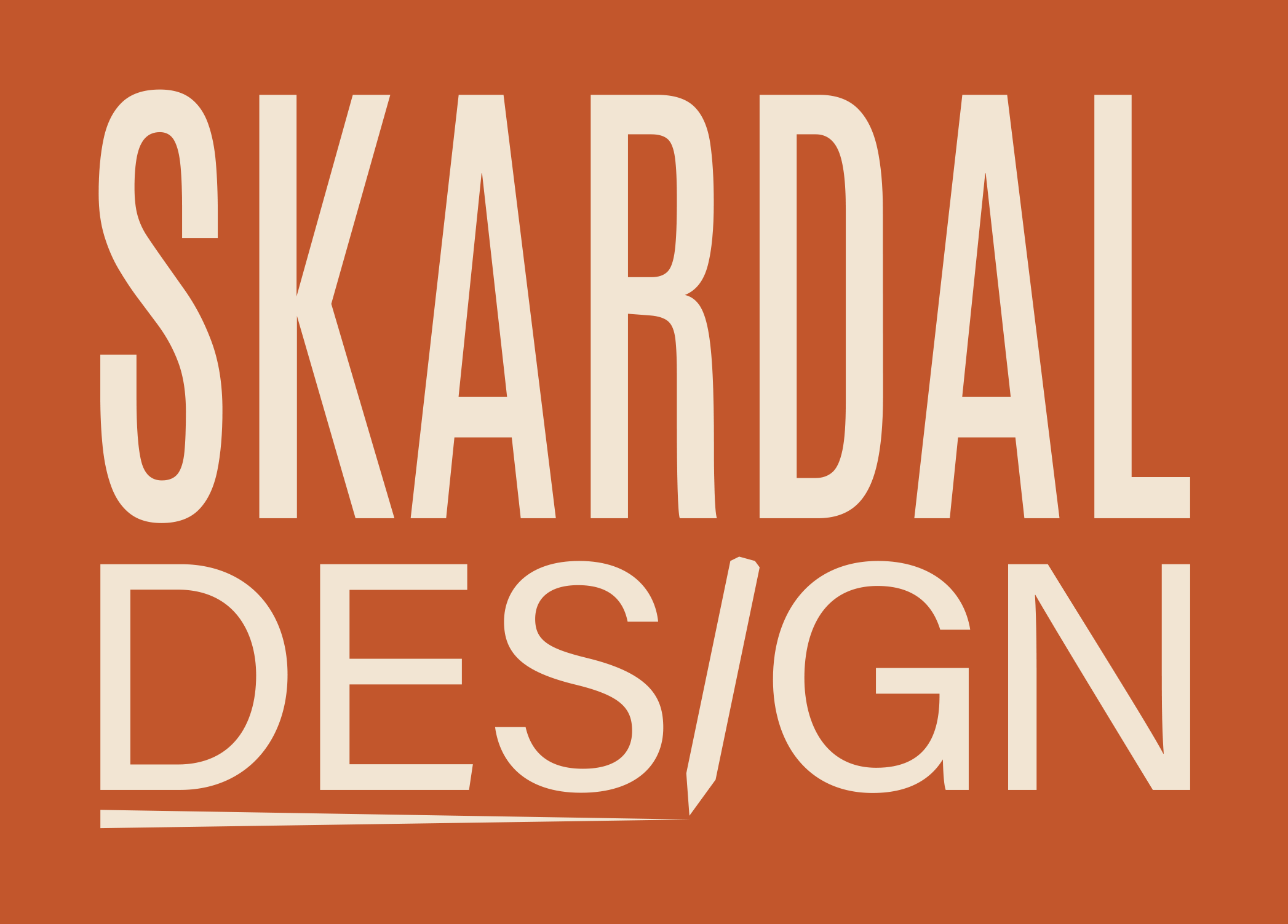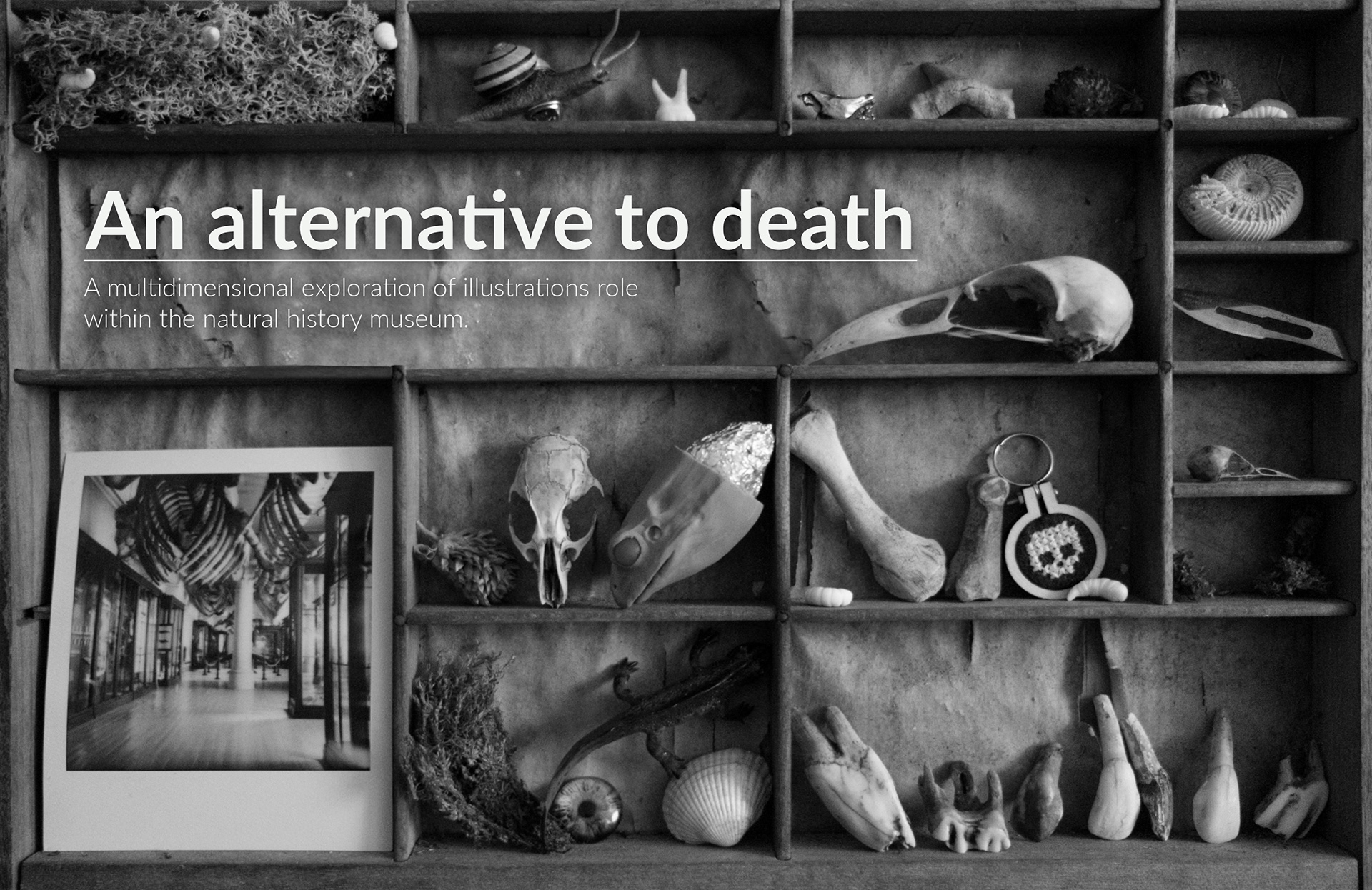
Front page of printed MA thesis
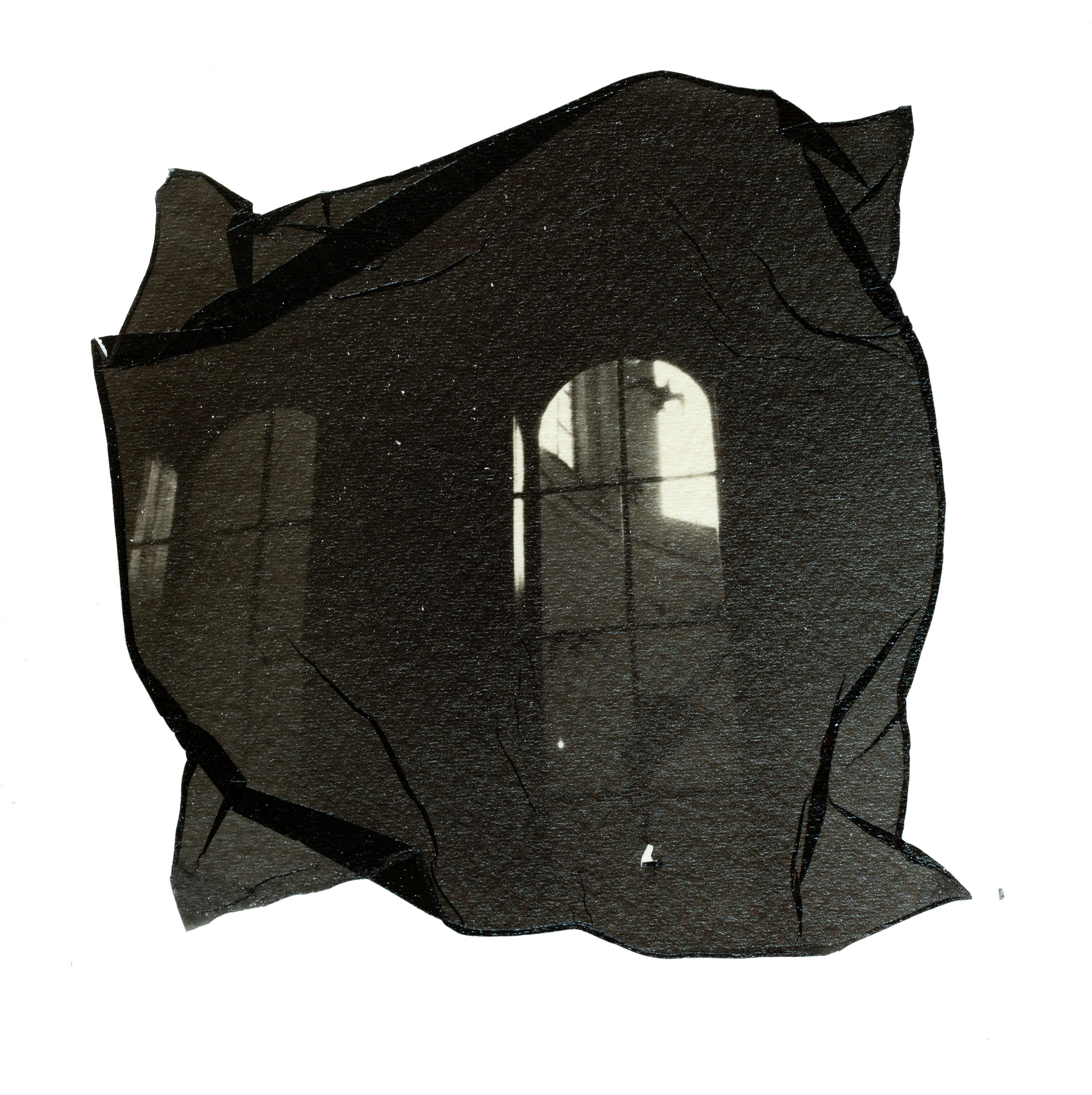
Illustrative element from MA thesis
Abstract
Everything that has ever lived will at one point die, but what happens after we die is not the same for everyone. Some death holds more emotional value than other, and this becomes especially obvious within the walls of the natural history museum. While discussions surrounding the ethics of displaying human remains are constantly ongoing, few ask these questions in regards to animals.
An alternative to death is an experimental, illustrative, research project that aims to highlight how multidimensional illustration can be used as a tool when displaying animals; both dead and alive, within the natural history museum. The project explores new materials and methods within the field of illustration and raises ethical questions about how we currently display animals in museum settings.
Research questions
Everything that has ever lived will at one point die, but what happens after we die is not the same for everyone. Some death holds more emotional value than other, and this becomes especially obvious within the walls of the natural history museum. While discussions surrounding the ethics of displaying human remains are constantly ongoing, few ask these questions in regards to animals.
An alternative to death is an experimental, illustrative, research project that aims to highlight how multidimensional illustration can be used as a tool when displaying animals; both dead and alive, within the natural history museum. The project explores new materials and methods within the field of illustration and raises ethical questions about how we currently display animals in museum settings.
Research questions
How does the communicative potential of illustration change when going from two dimensions to multiple dimensions?
What potential does multidimensional illustration hold when displaying animals; both dead and alive, in the setting of the natural history museum?
What potential does multidimensional illustration hold when displaying animals; both dead and alive, in the setting of the natural history museum?
Early experimentation

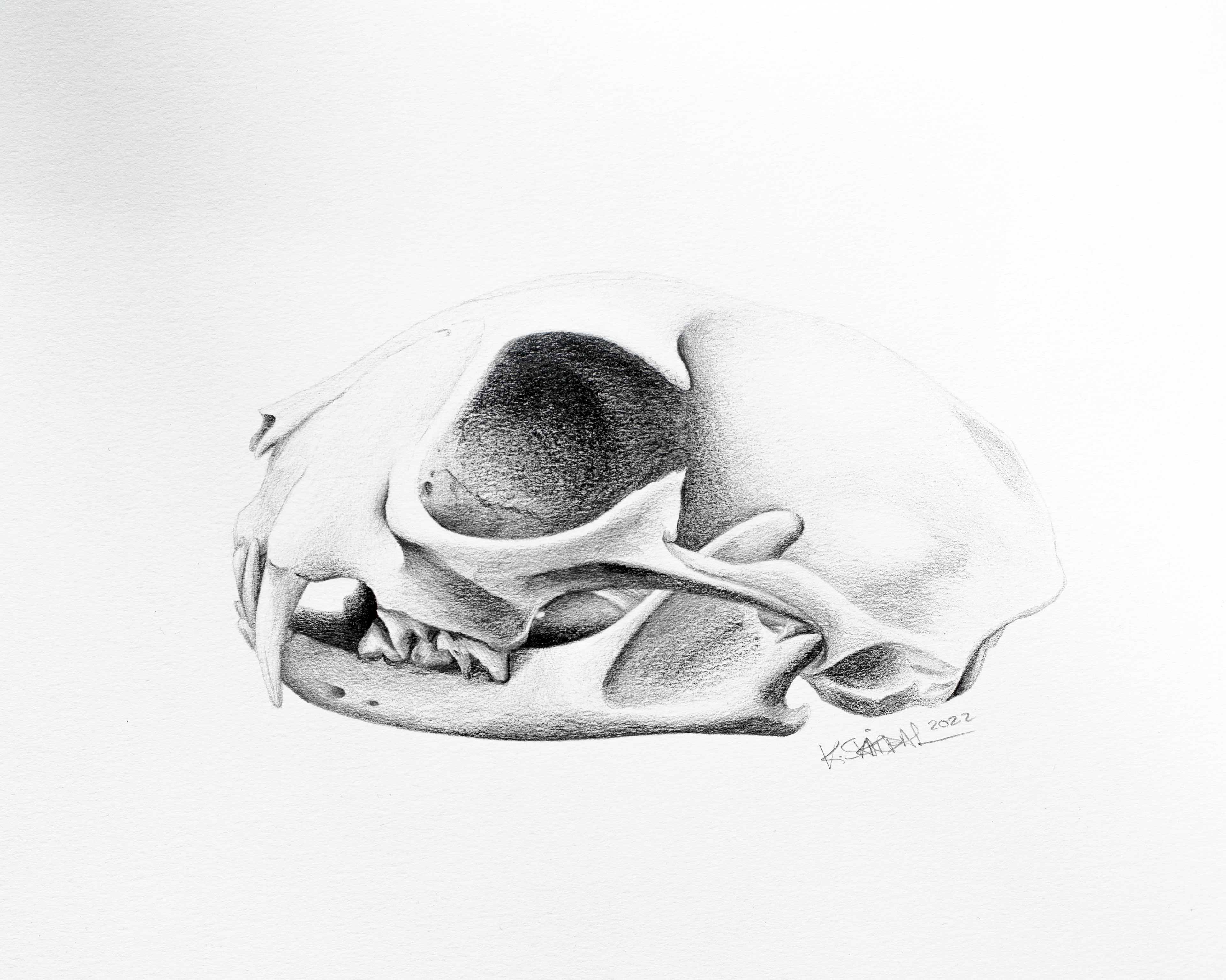
Cat skull study, 2022

Dog skull study, 2022
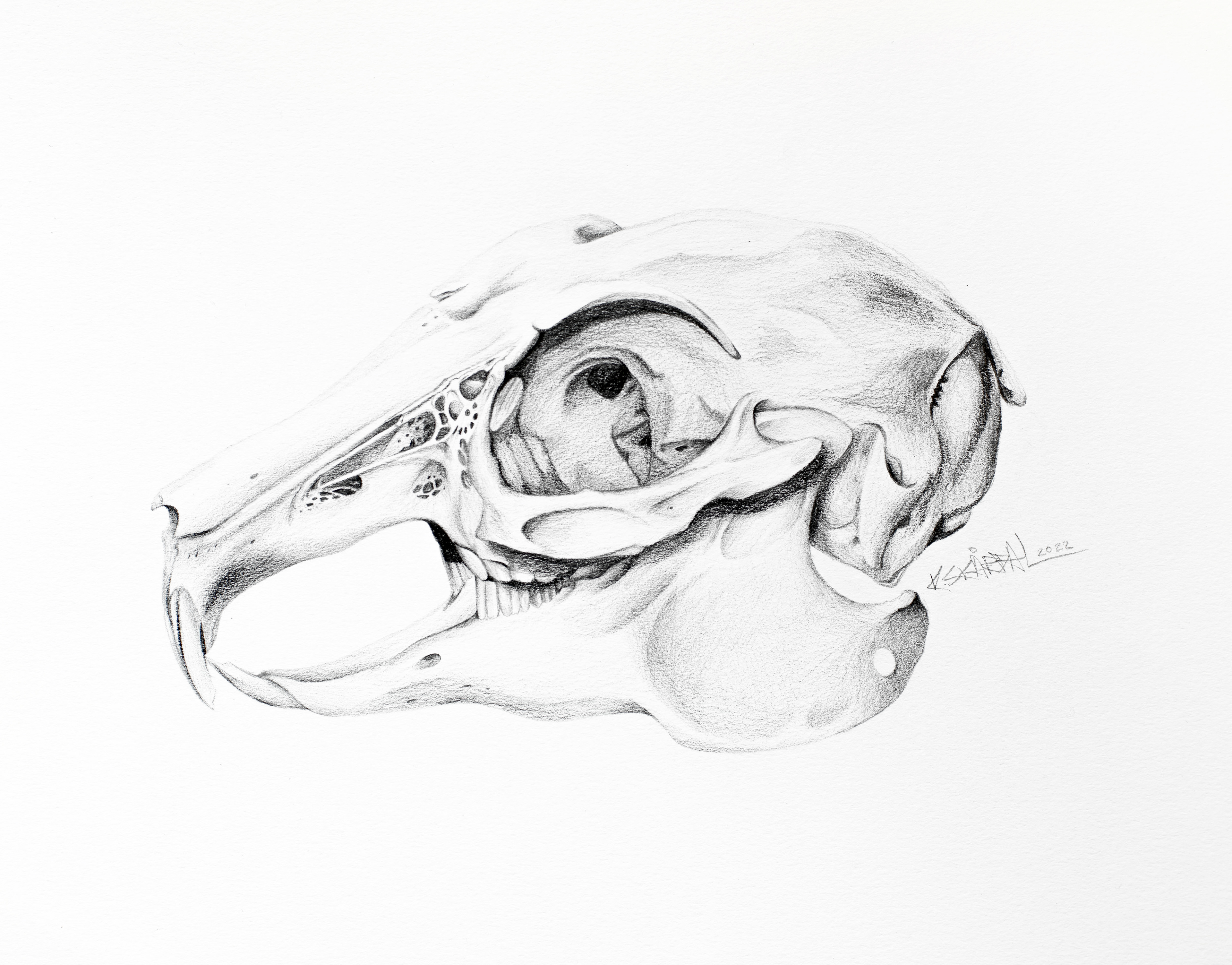
Rabbit skull study, 2022
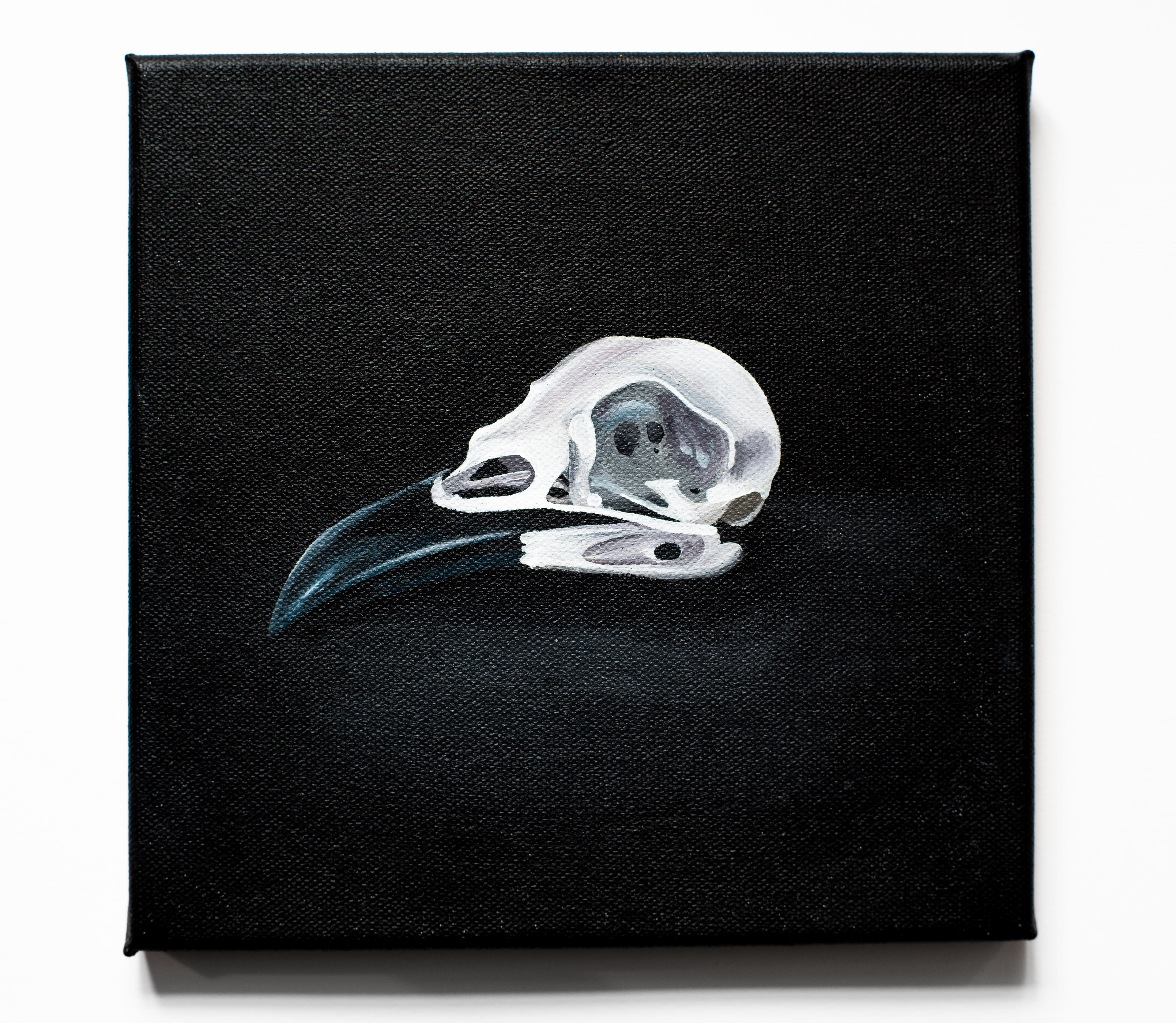
Bird Skull, acrylic painting, 2022
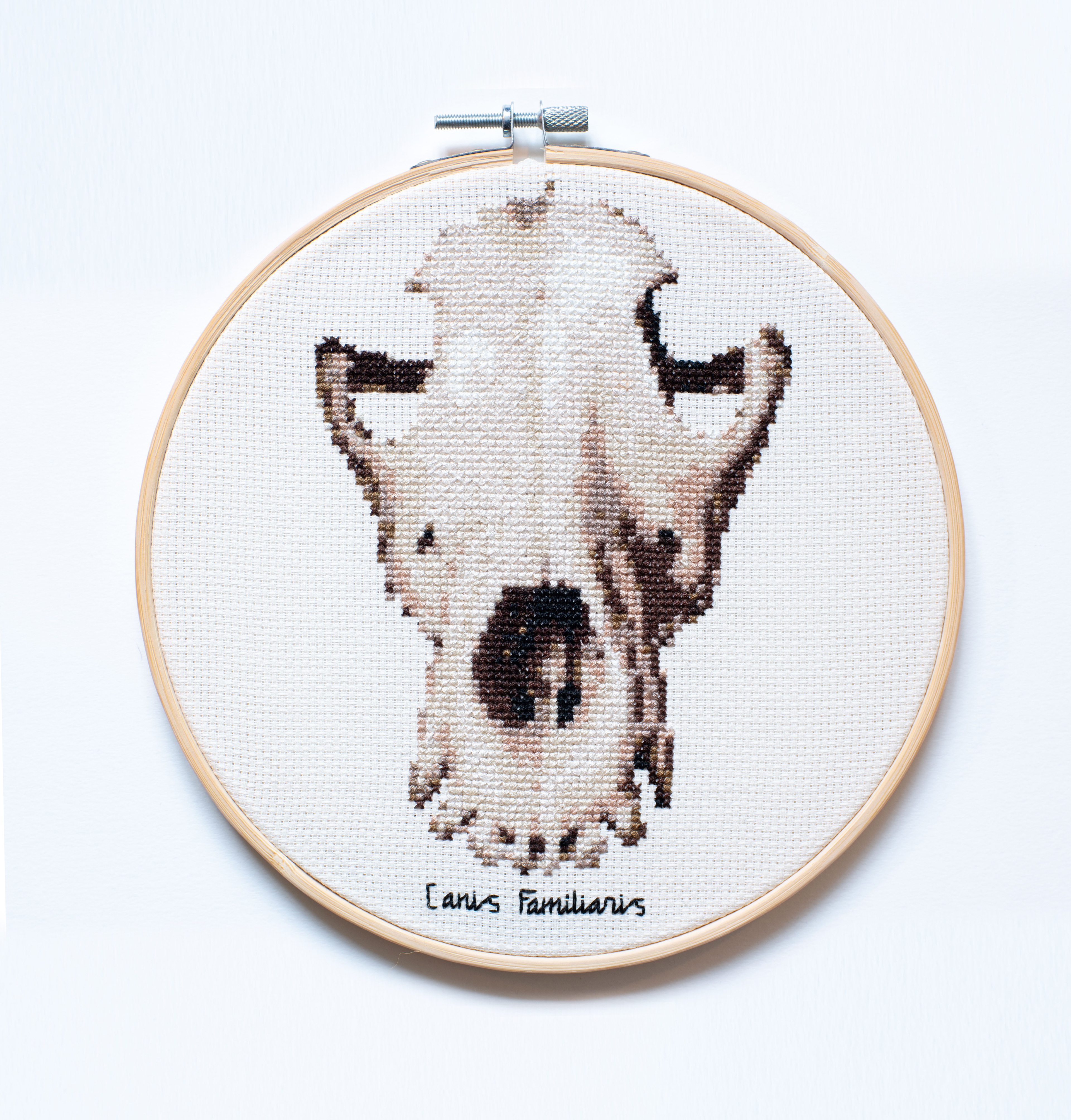
Dog skull embroidery, 2022
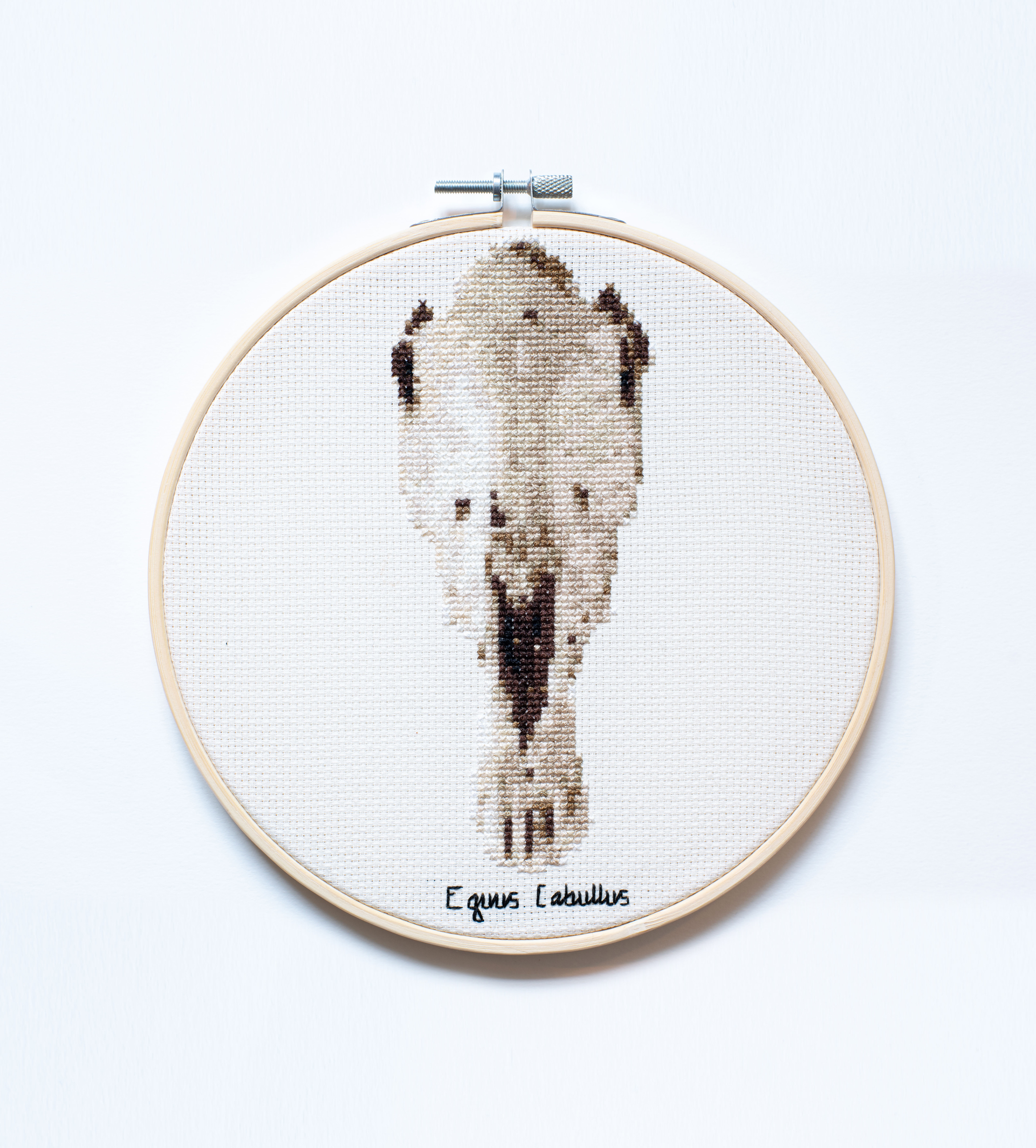
Horse skull embroidery, 2022
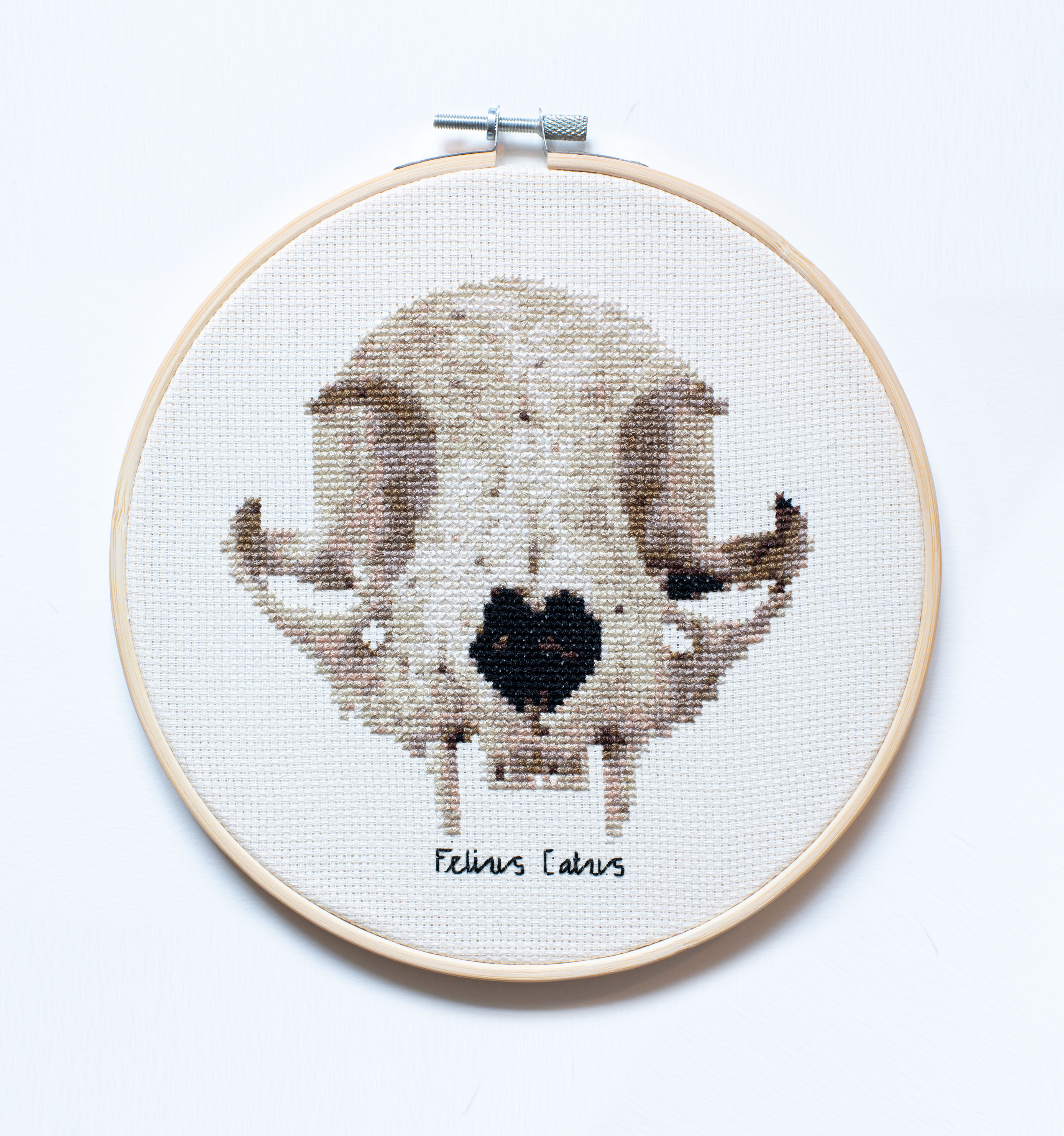
Cat skull embroidery, 2022
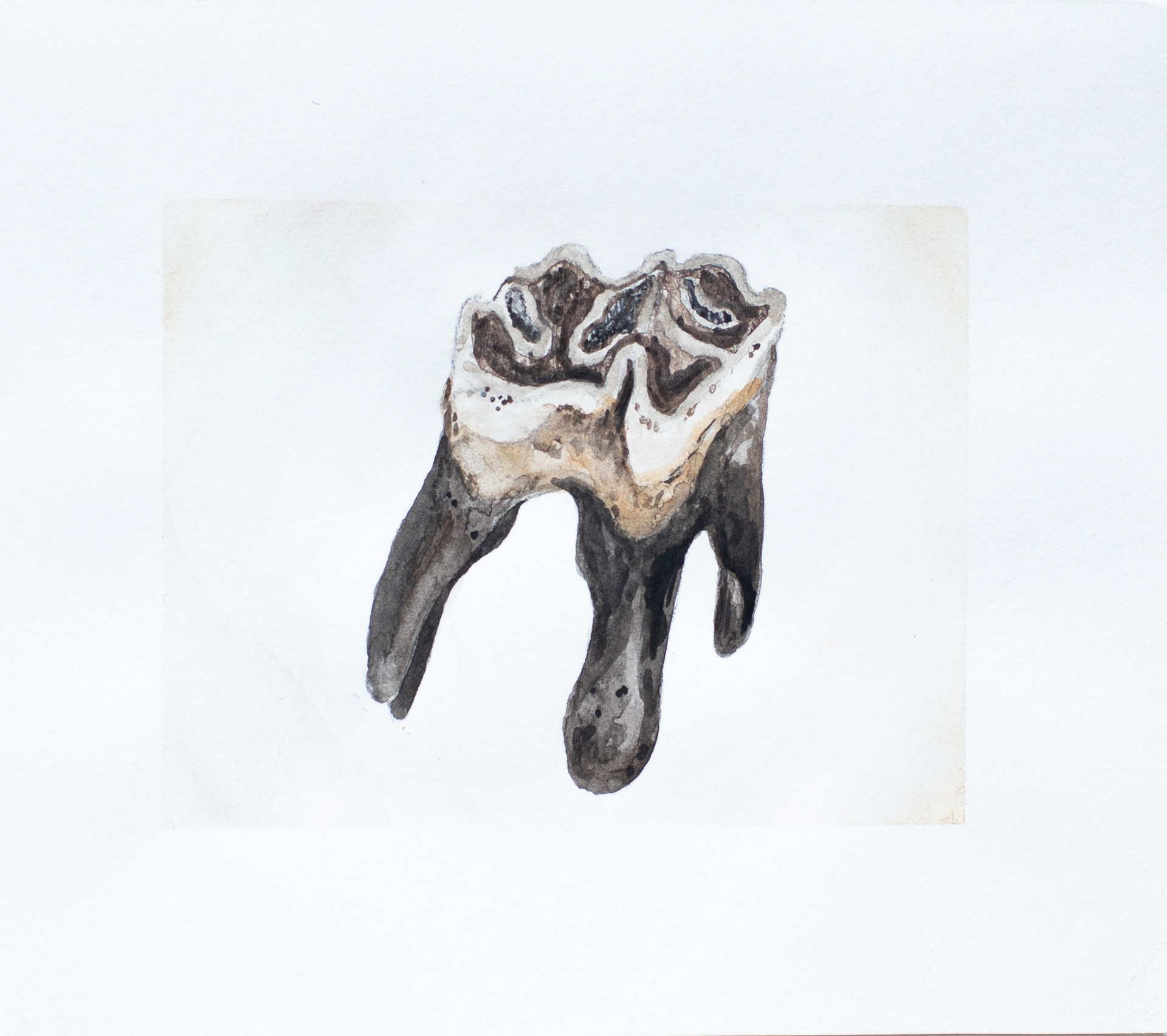
Horse tooth - watercolour study, 2022
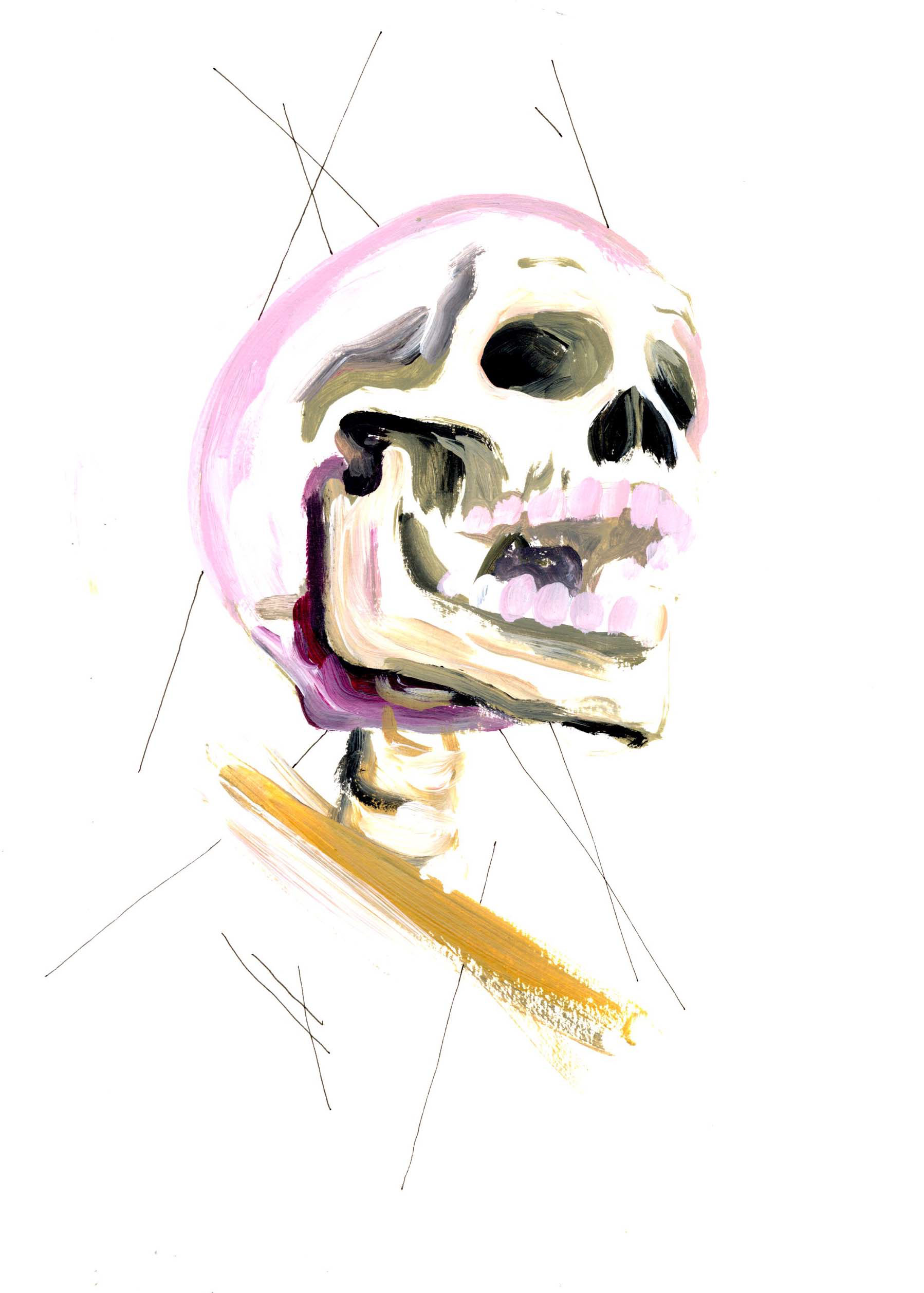
Mixed media skull, 2022
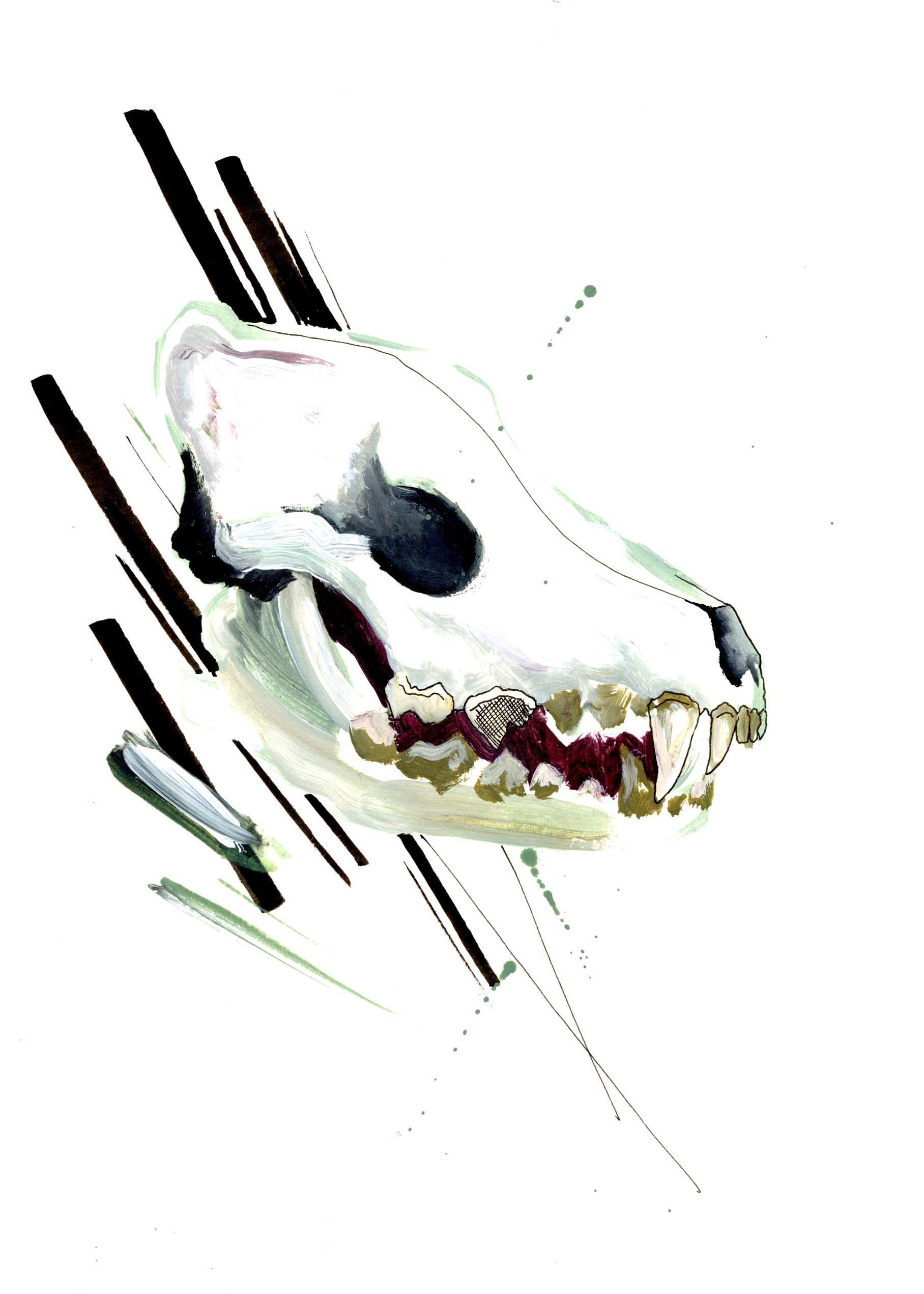
Mixed media dog skull, 2022
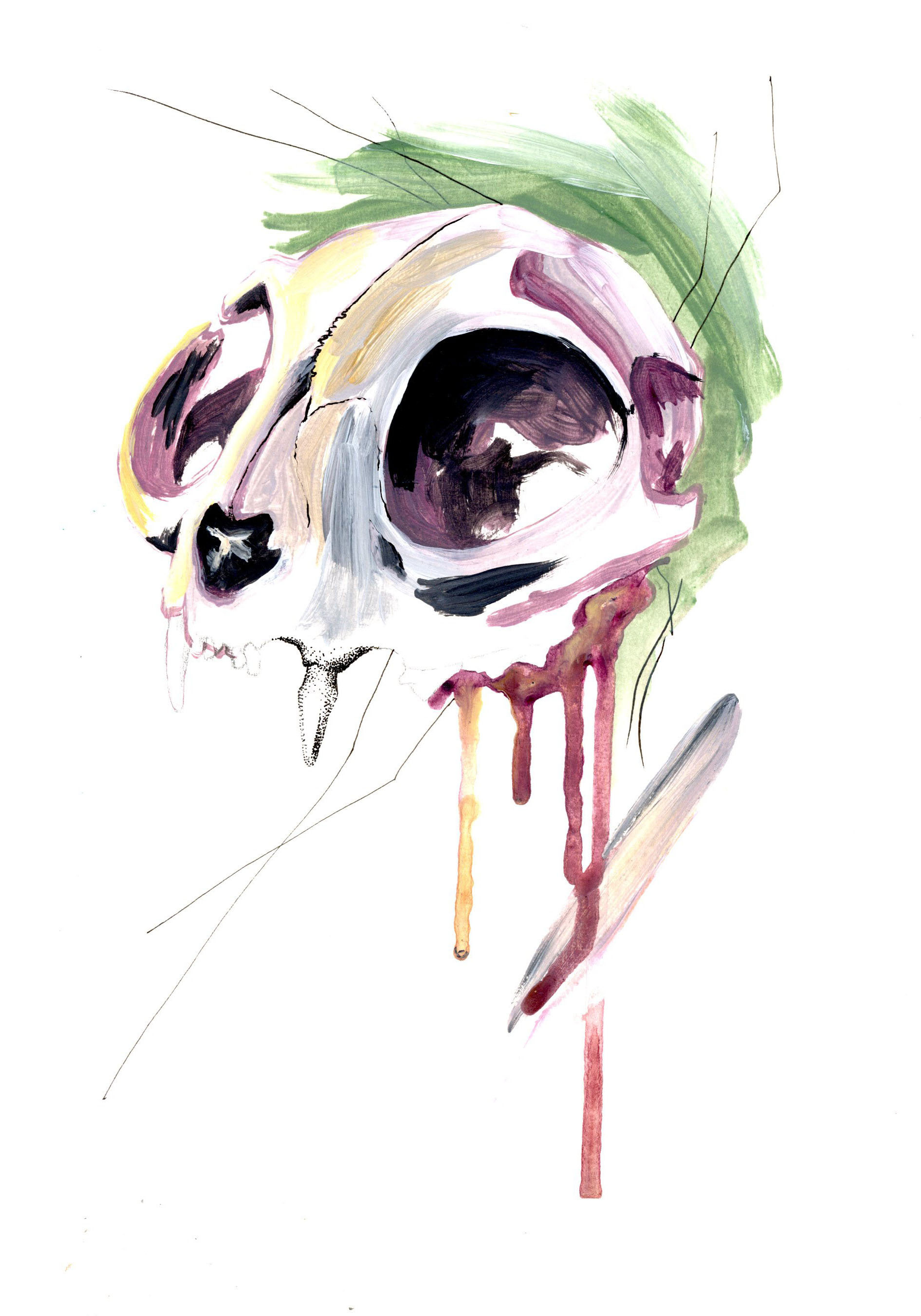
Mixed media cat skull, 2022

Horse teeth - watercolour study, 2022
An alternative to death started as a project that wanted to illustrate non-human death. During the first stages of my practical research I was drawn to what some might call obvious examples of aesthetic death.
These early explorations focused heavily on; but were not limited too, animal skulls, teeth and dead birds. It was important for me to experience how the visual imagery translated through different mediums and techniques, as well as how I personally felt when working with different styles and materials.
These early explorations focused heavily on; but were not limited too, animal skulls, teeth and dead birds. It was important for me to experience how the visual imagery translated through different mediums and techniques, as well as how I personally felt when working with different styles and materials.
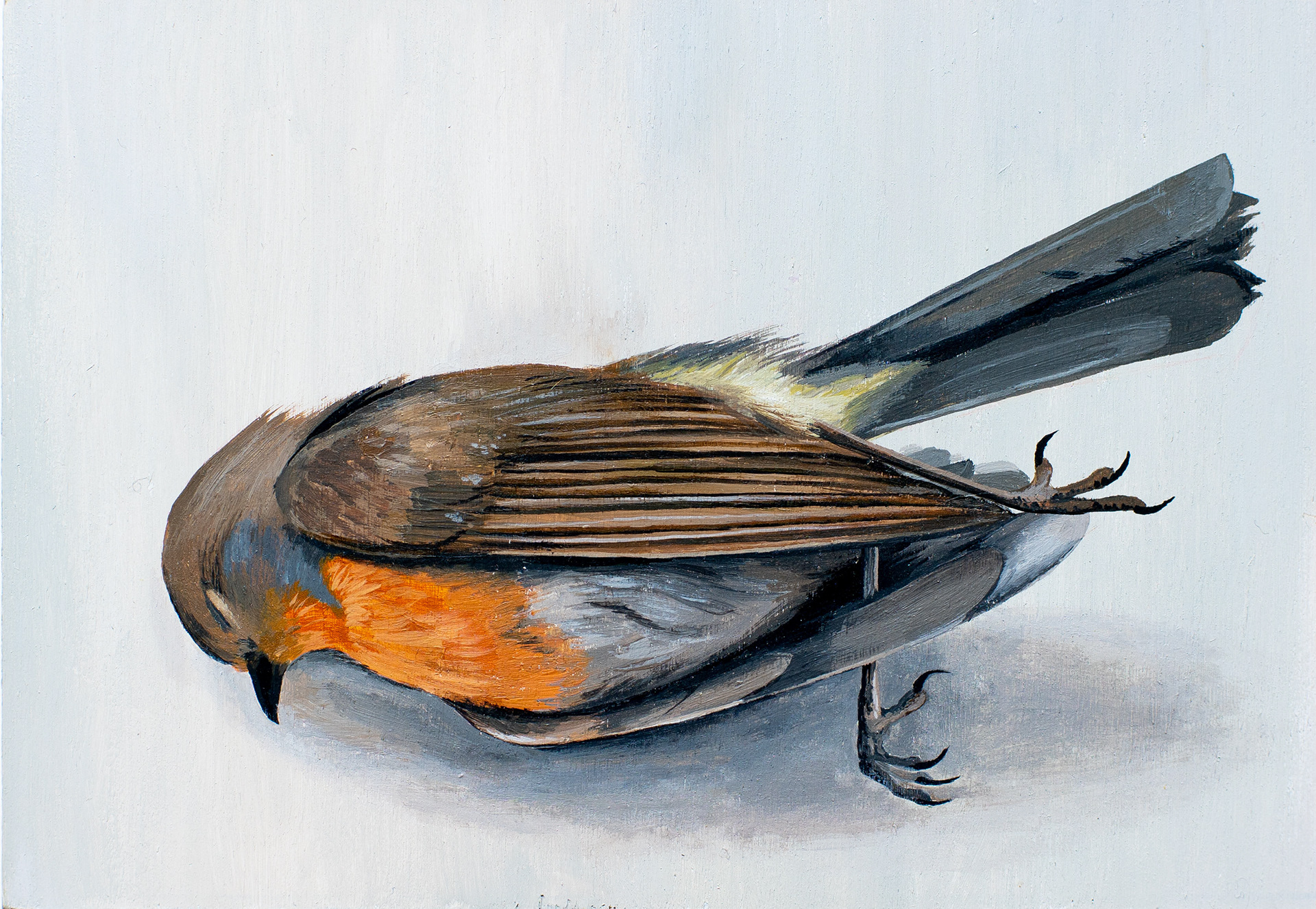
Still death, 2022
From two-dimensional to three-dimensional
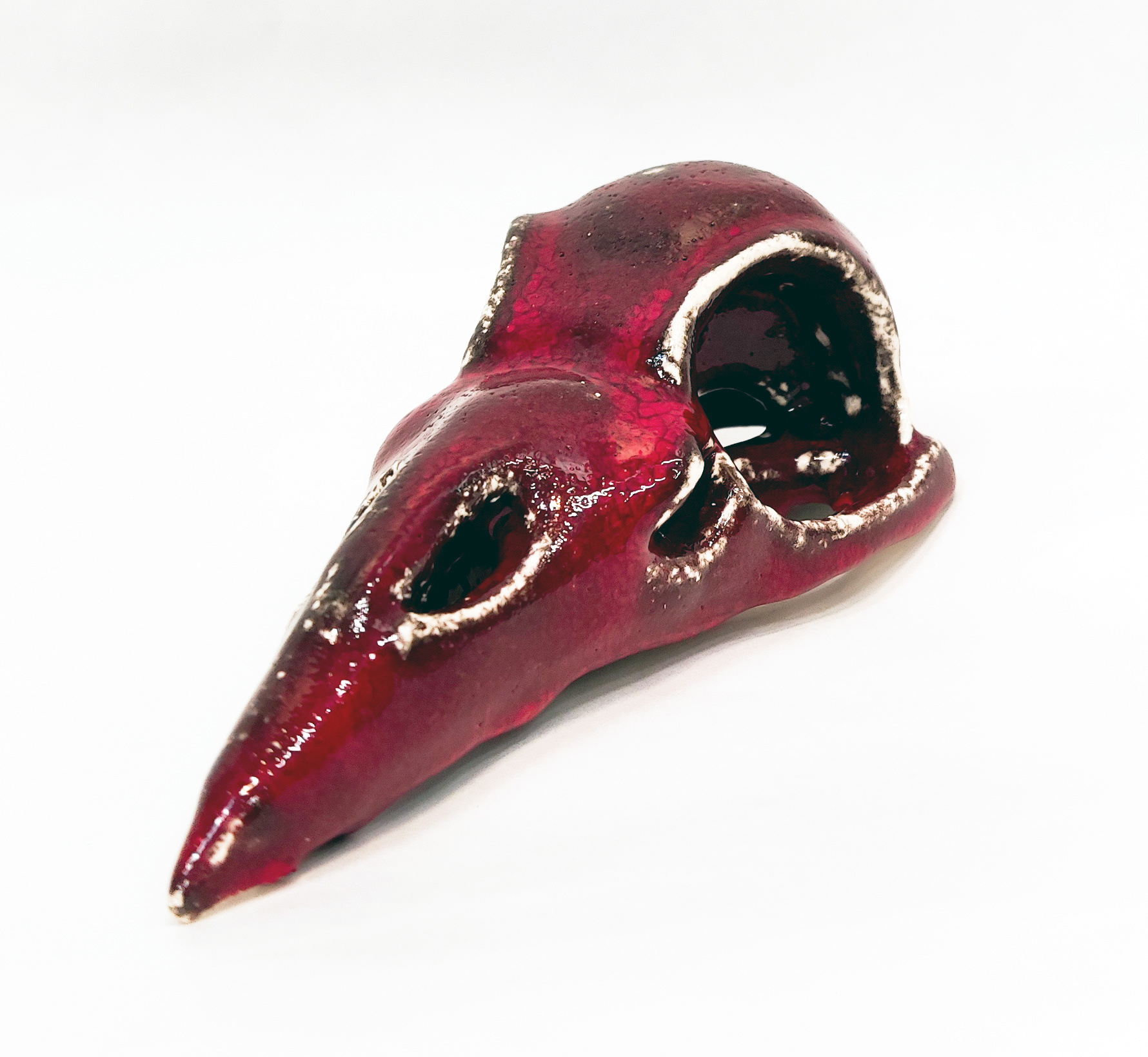
Ceramic bird skull
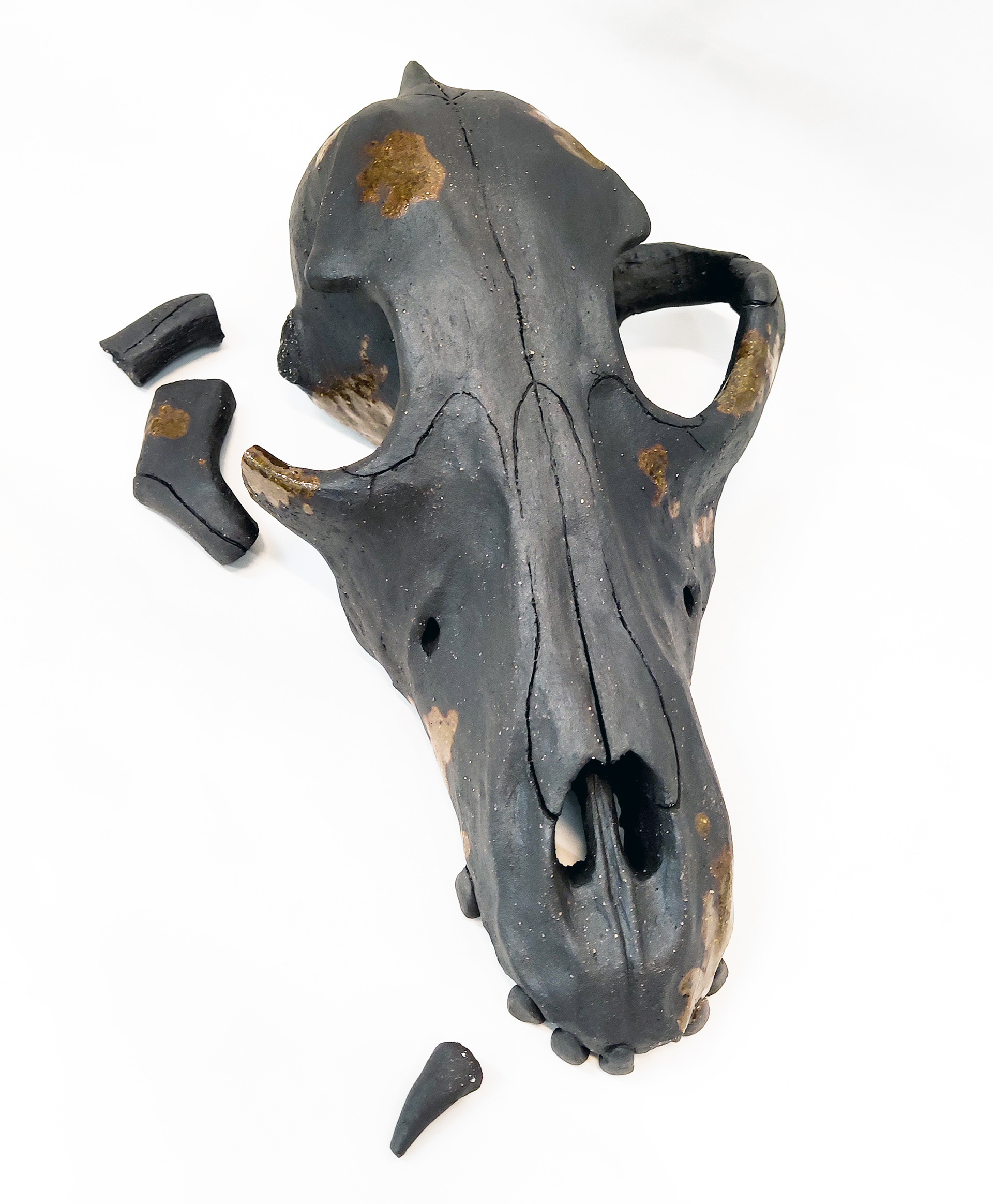
Ceramic dog skull
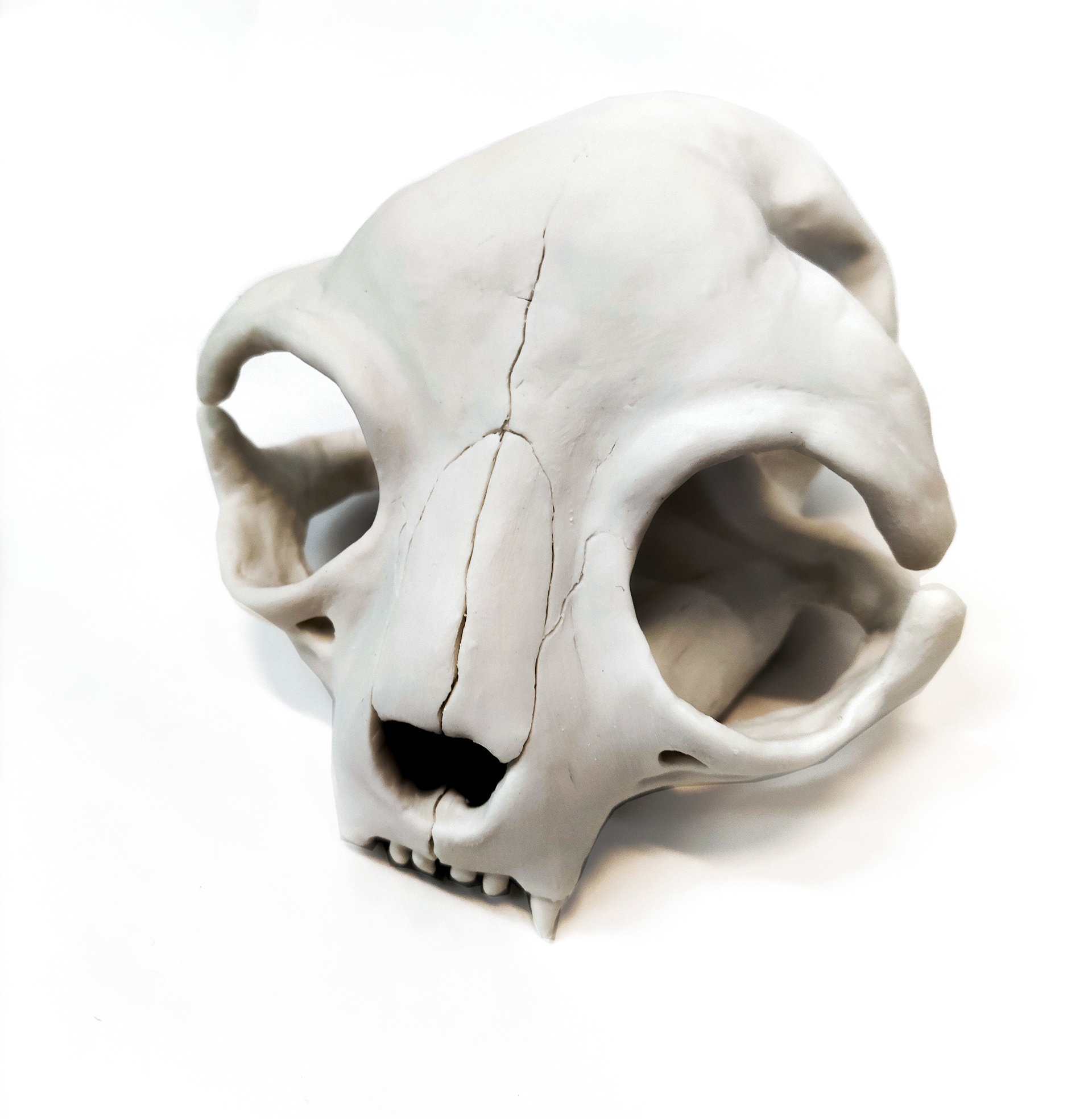
Ceramic cat skull
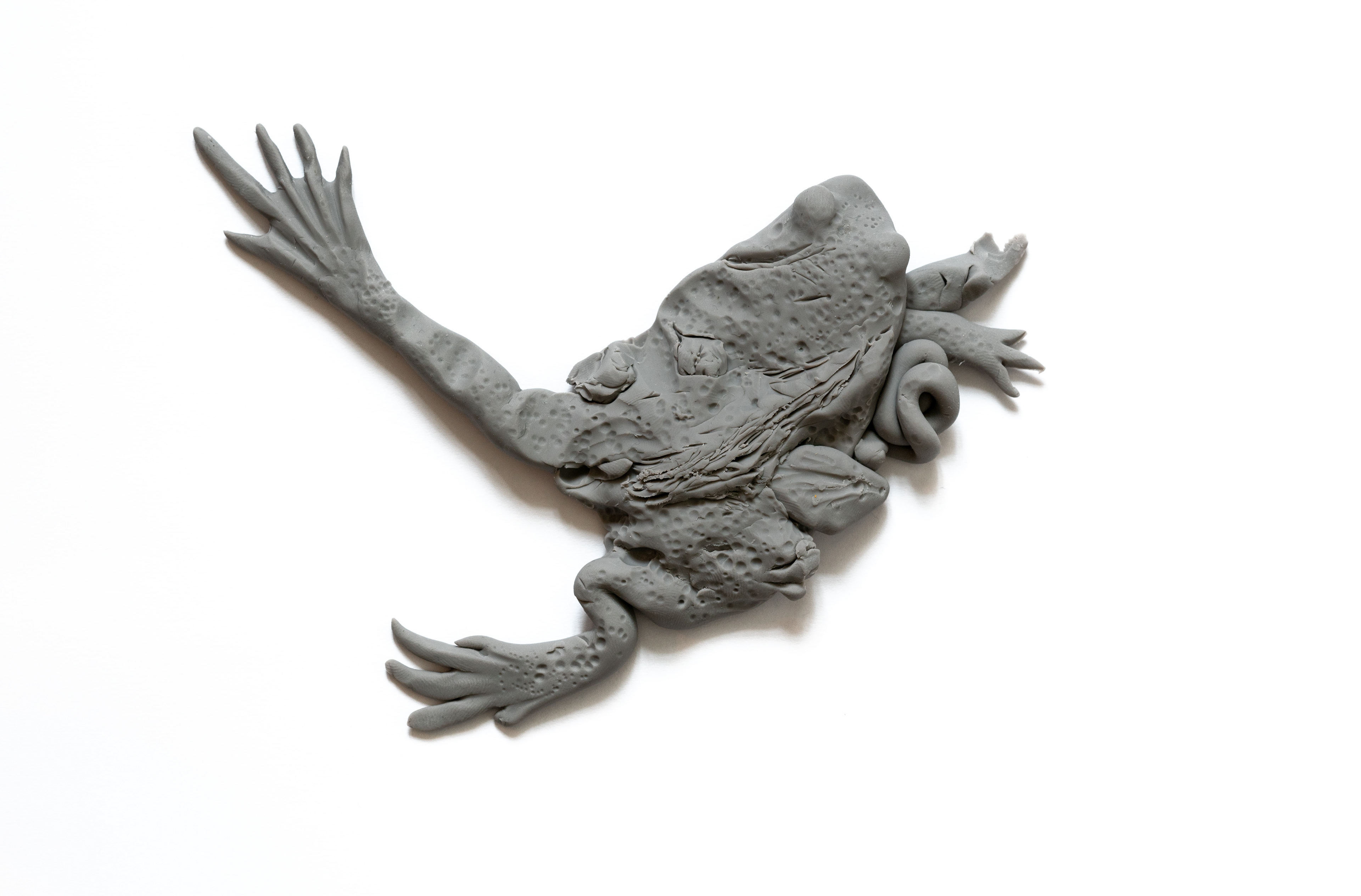
Dead frog sculpture 01
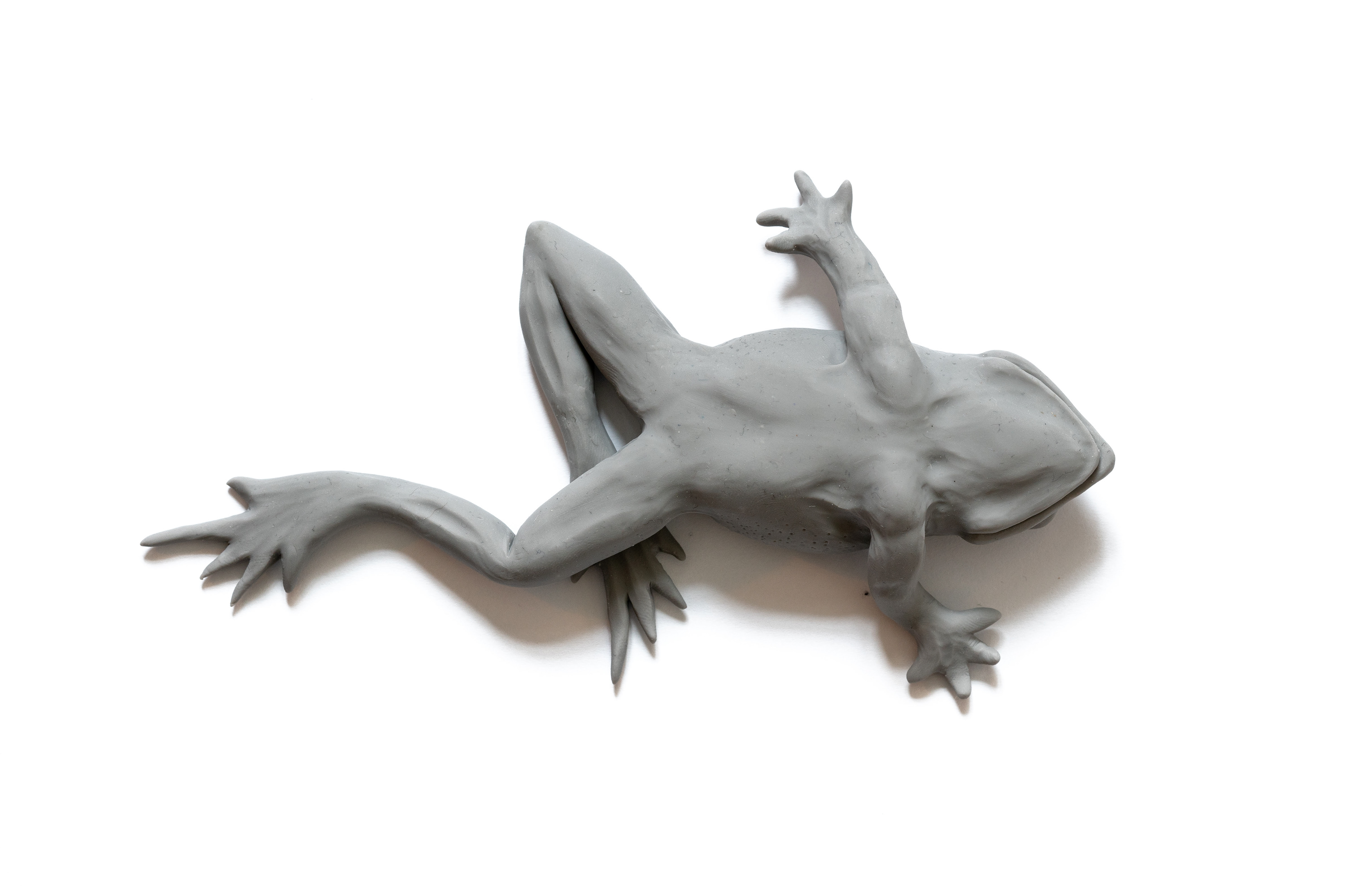
Dead frog sculpture 02
I continued to let my materials guide me and because of this the project quickly developed from the two-dimensional to the multi-dimensional.
By reimagining the boundaries of illustration the project could explore something that lay beyond the flattened surface. I experimented with multiple materials including ceramics. In the end I would land on polymer clay, a material that was highly beneficial when creating small, realistic sculptures.
By reimagining the boundaries of illustration the project could explore something that lay beyond the flattened surface. I experimented with multiple materials including ceramics. In the end I would land on polymer clay, a material that was highly beneficial when creating small, realistic sculptures.
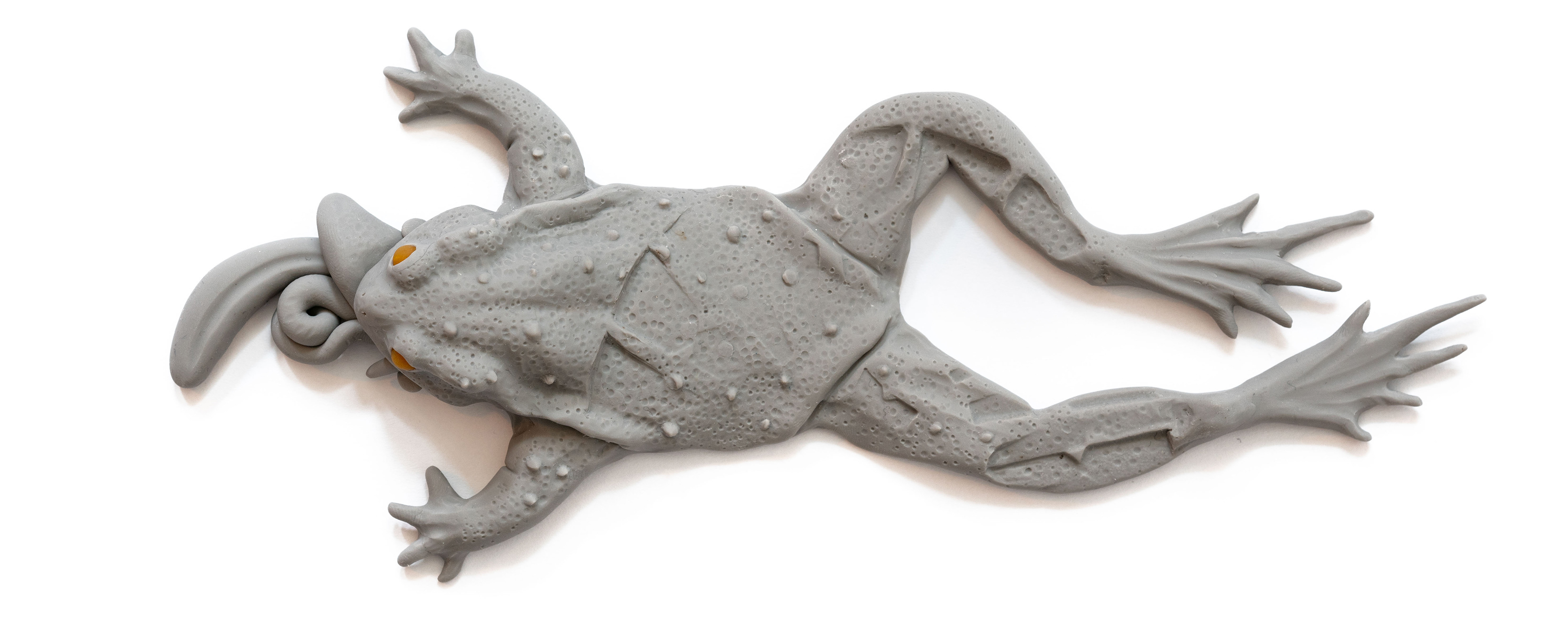
Dead frog sculpture 03
The final concept
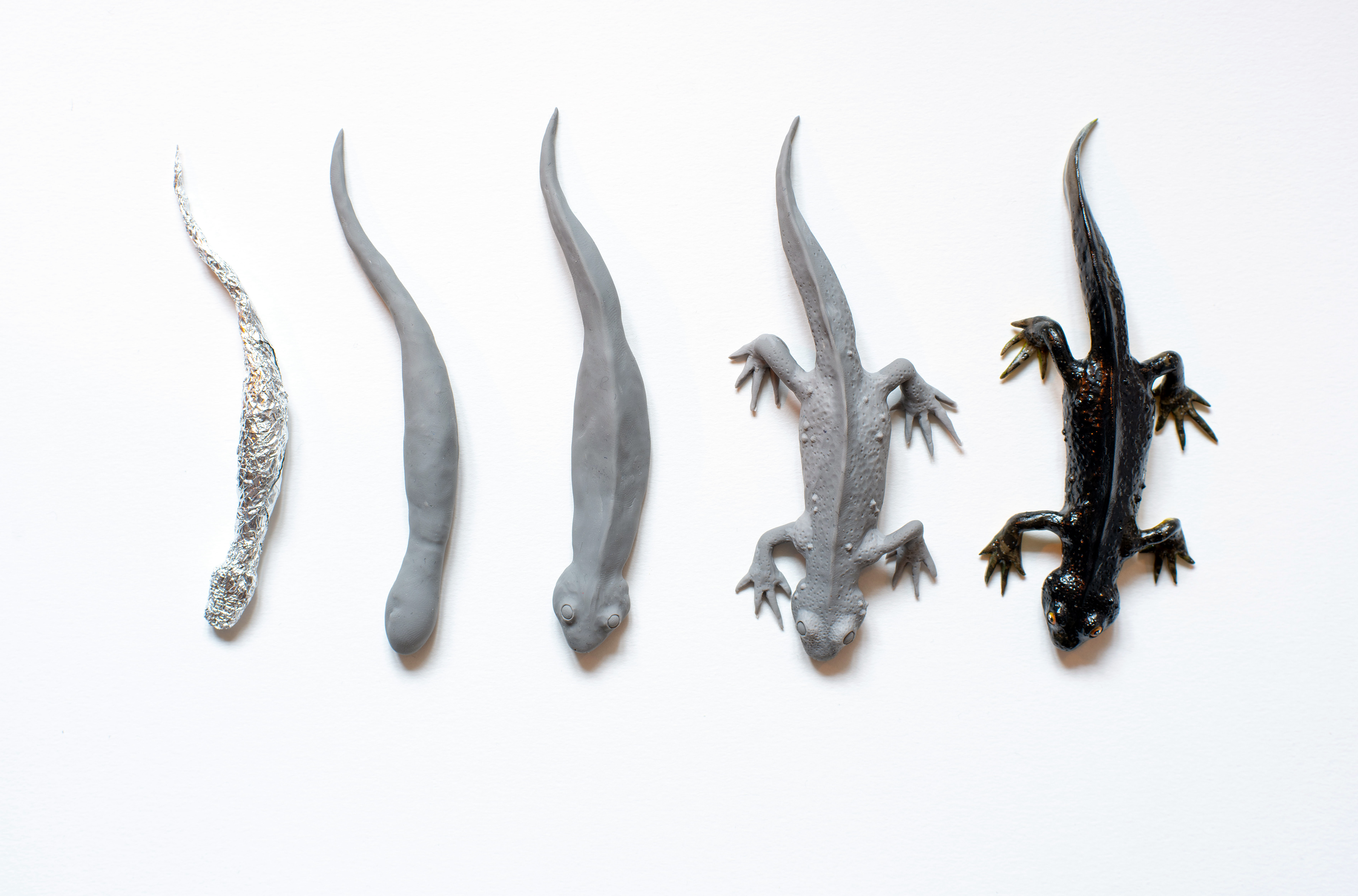
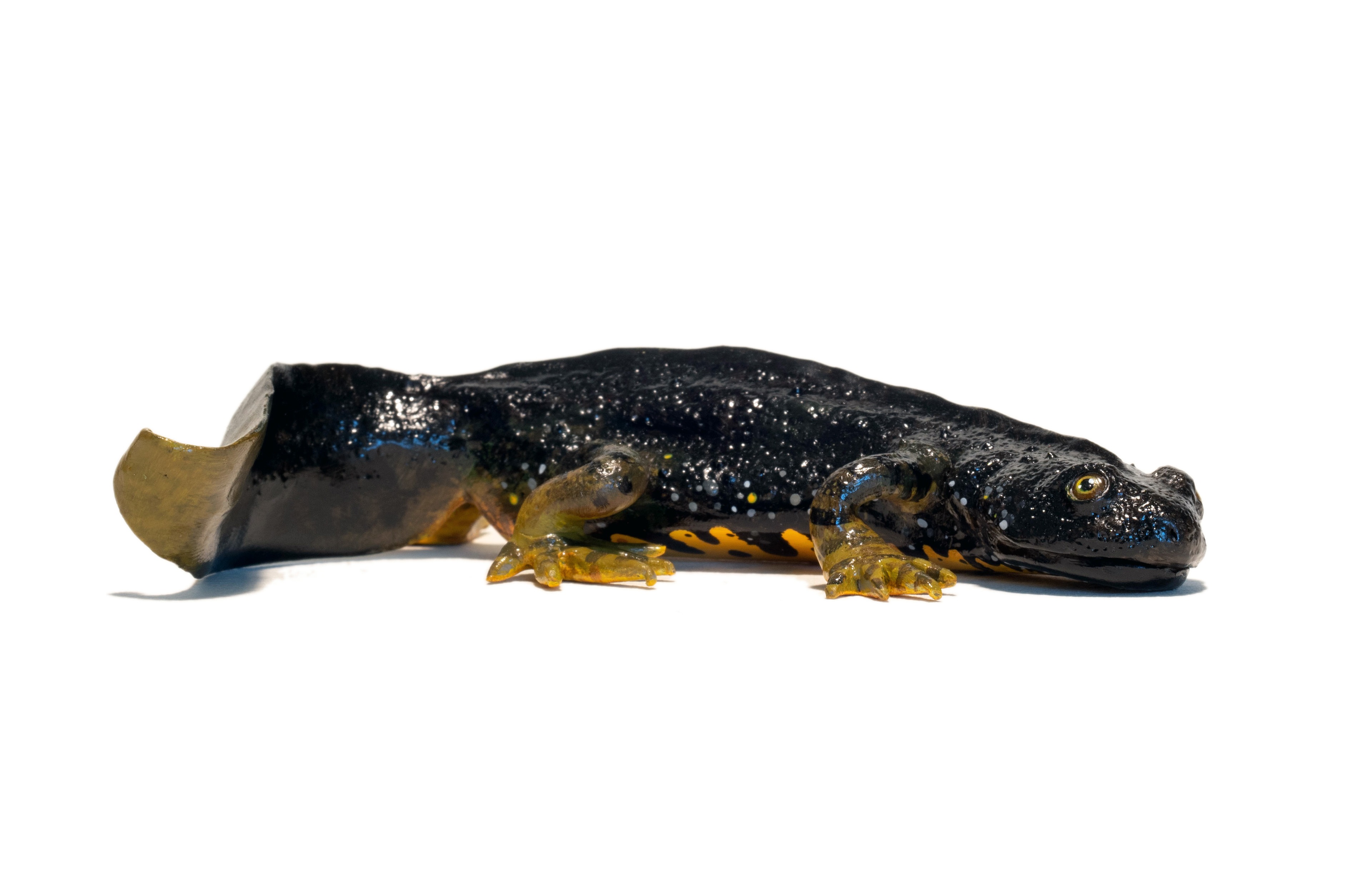
Collaborating with natural history museums, as well as getting information from biologists, I realised that the techniques I were exploring might not only be suitable for illustrating death. They actually held more potential in illustrating life as an alternative to death.
My illustrations would be an alternative to the wet specimens and taxidermy found at the natural history museum, not because those techniques are adherently bad, but because for some creatures these techniques do not give them justice.
My illustrations would be an alternative to the wet specimens and taxidermy found at the natural history museum, not because those techniques are adherently bad, but because for some creatures these techniques do not give them justice.
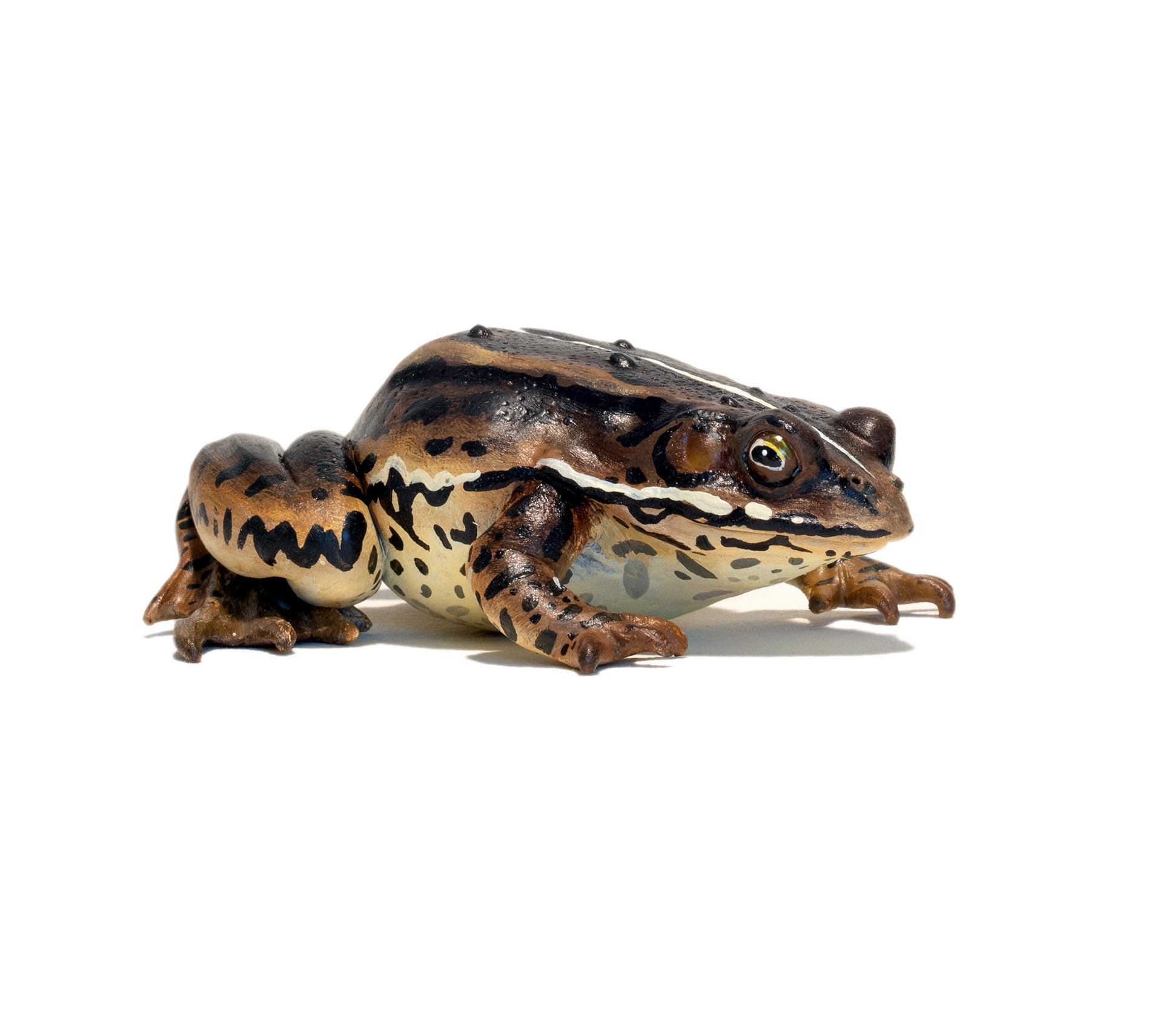
Hand sculpted pool frog, 2023
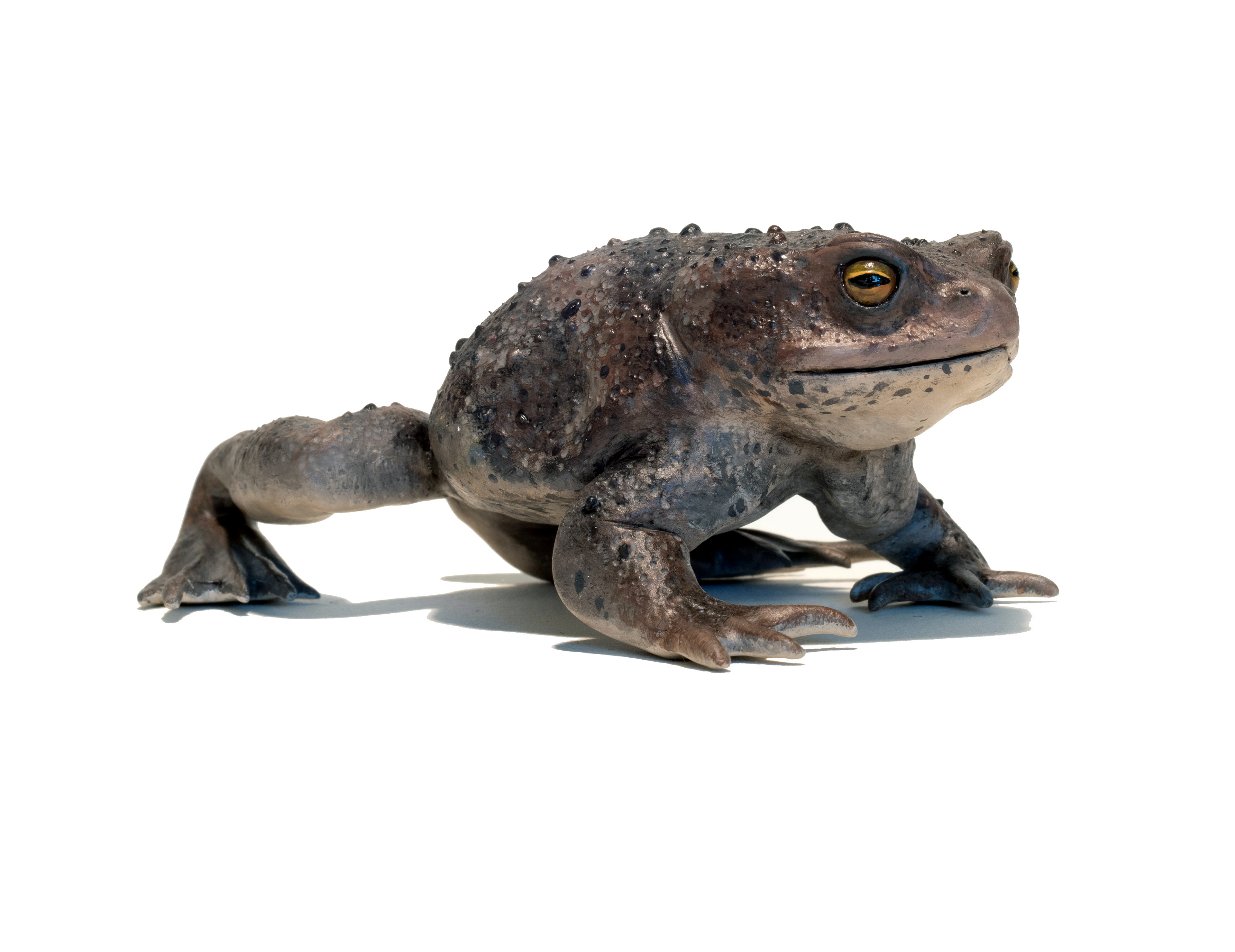
Hand sculpted European toad, 2023
Master thesis exhibition, 2023
This journey of illustrative exploration resulted in a discursive-design exhibition that challenged existing techniques within the field of natural history, and questioned our views of illustration as a traditionally two-dimensional technique.
Illustration in both the traditional sense and in the form of object has the potential to alter how we view specific topics, how we interact with a subject and how we reflect upon established concepts. By implementing discursive design techniques and evoking the audiences feelings, we can alter the existing narrative of the museum space and highlight the challenges that exist.
By presenting the audience with accurate and lifelike sculptures of amphibians; that did not rely on the physical death of an animal to be produced, the audiences view of traditional techniques is altered, and we are reminded of how our previous and current quest for knowledge and information has impacted other living beings.
By presenting the audience with accurate and lifelike sculptures of amphibians; that did not rely on the physical death of an animal to be produced, the audiences view of traditional techniques is altered, and we are reminded of how our previous and current quest for knowledge and information has impacted other living beings.
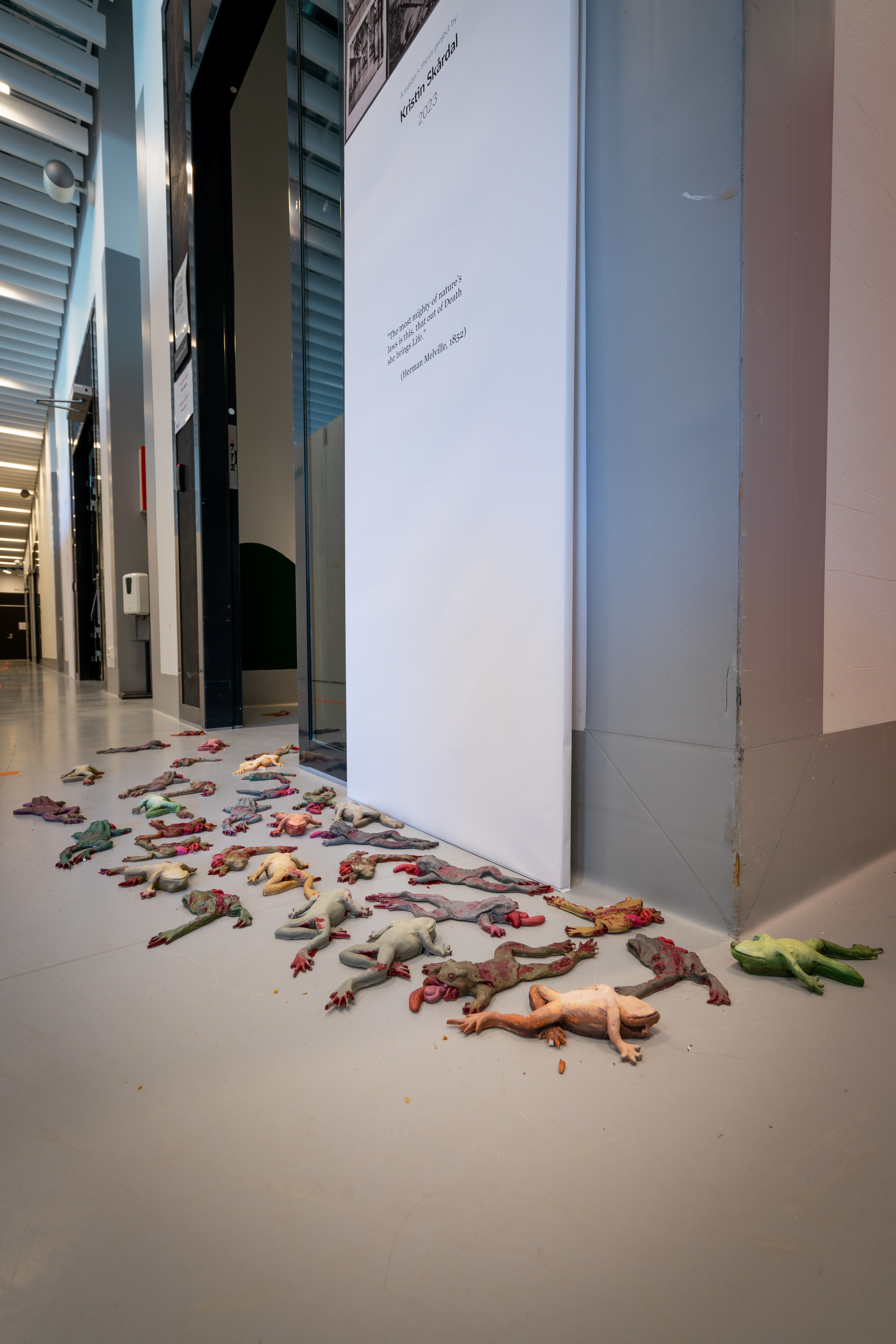
Exhibition entrance
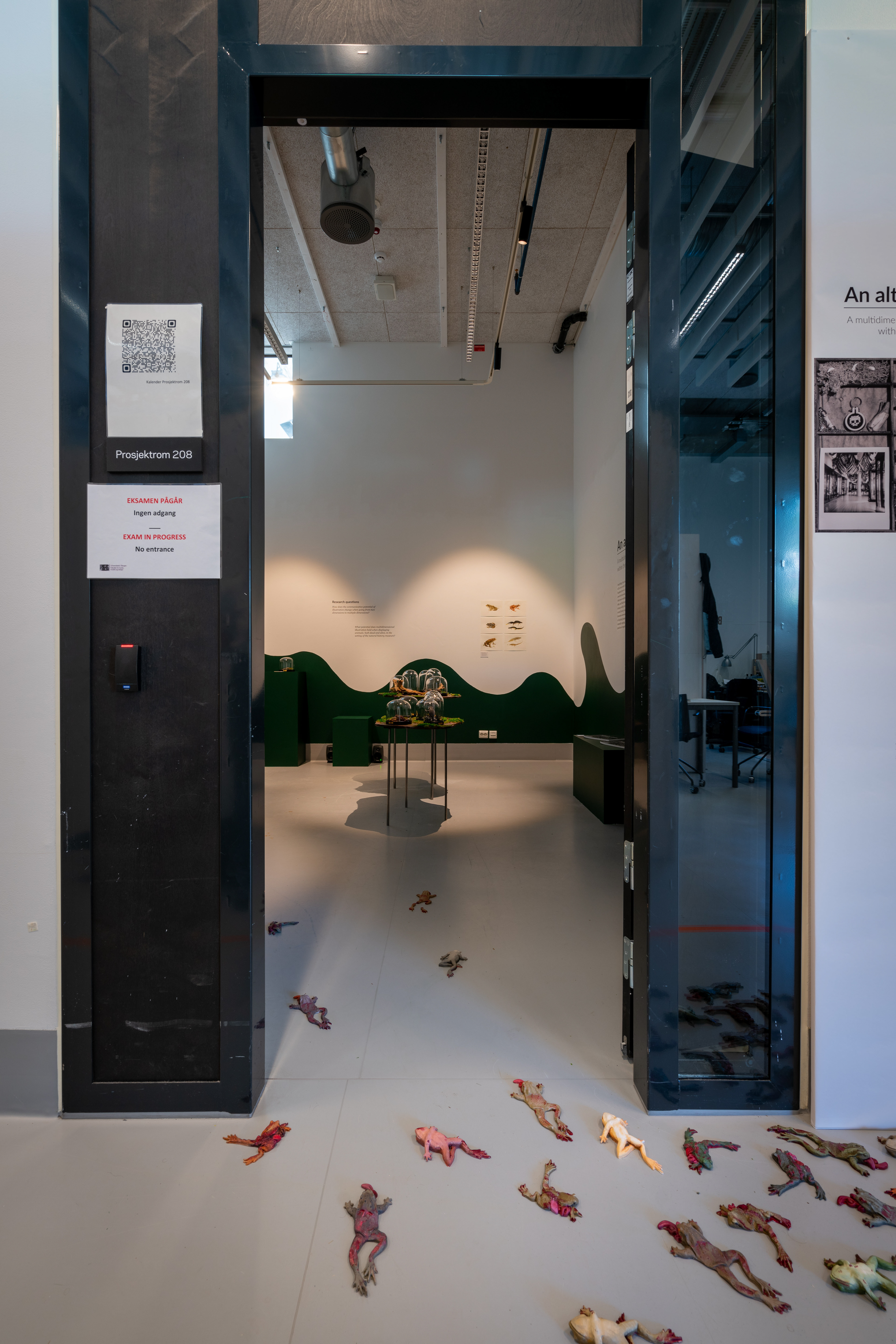
View through exhibition doorway
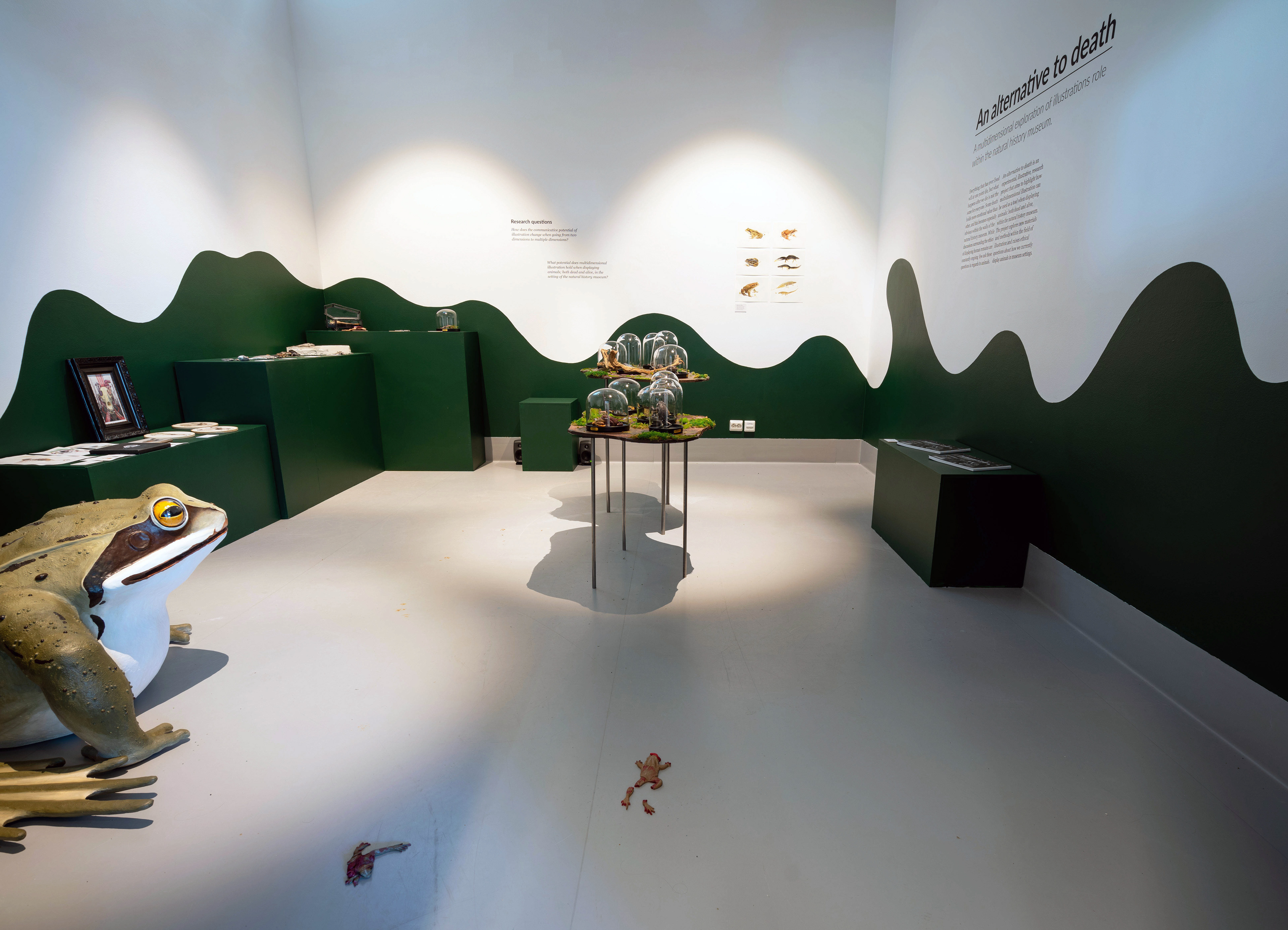
First entrance into exhibition space
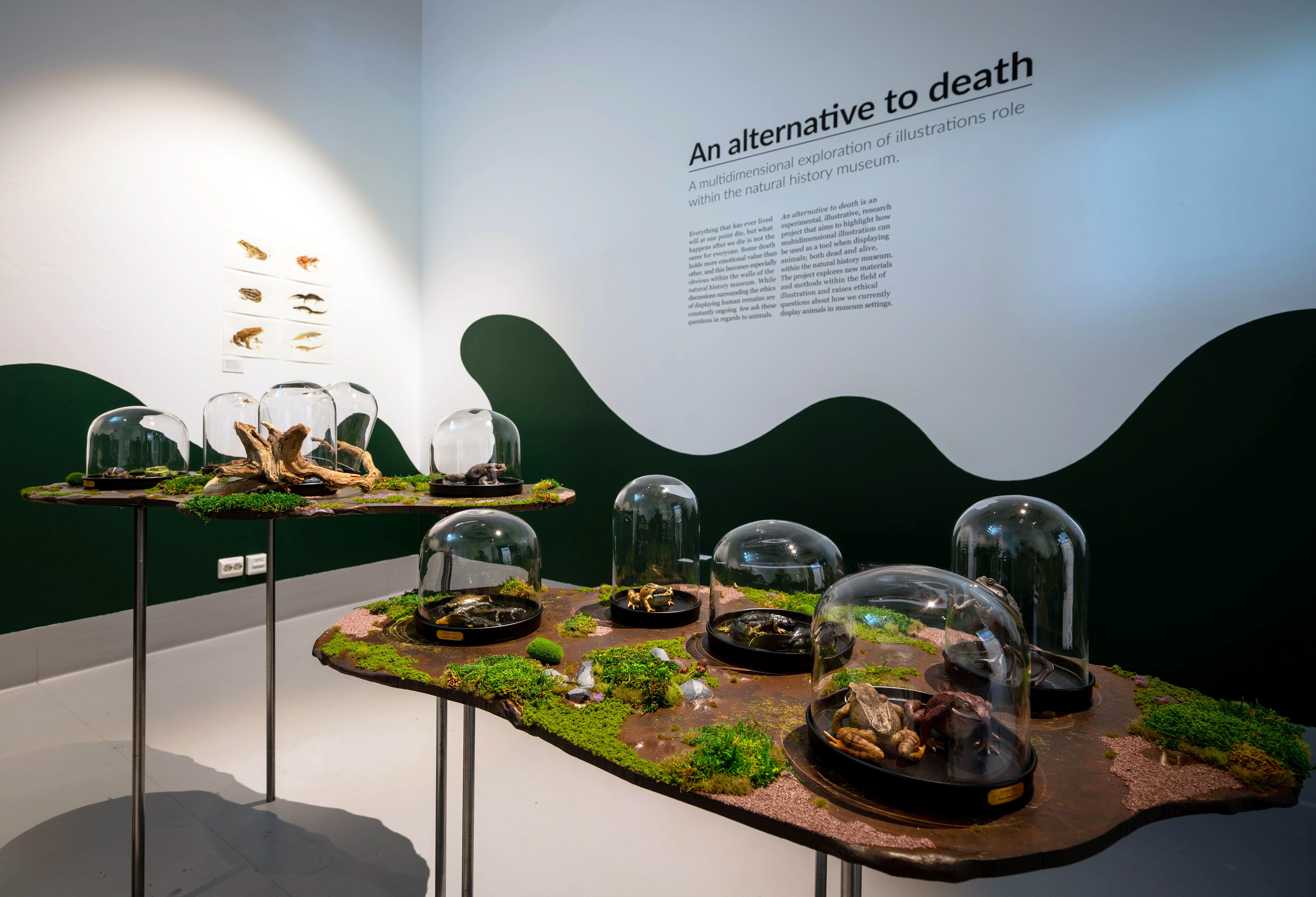
The exhibition space
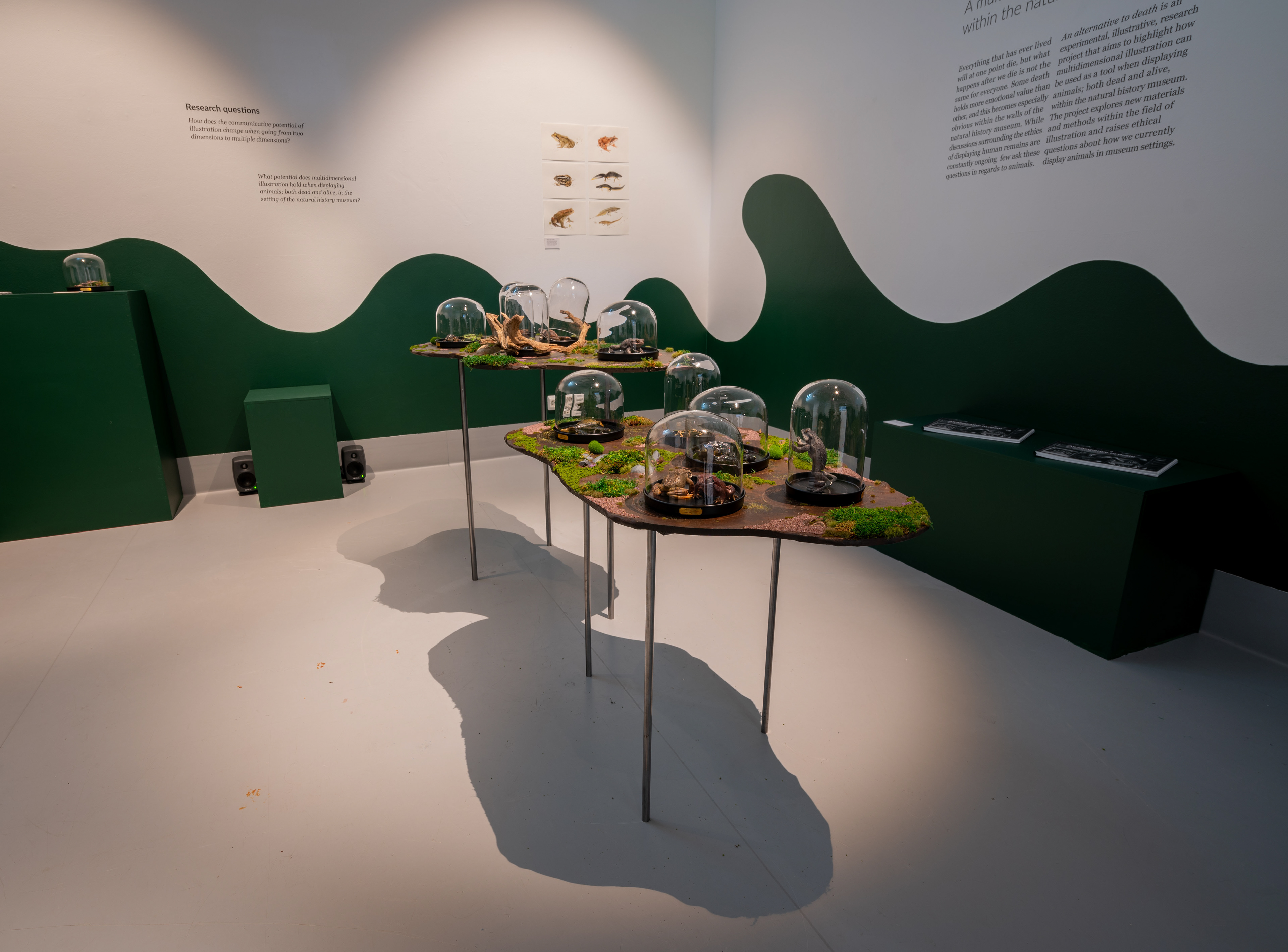
Biotope table
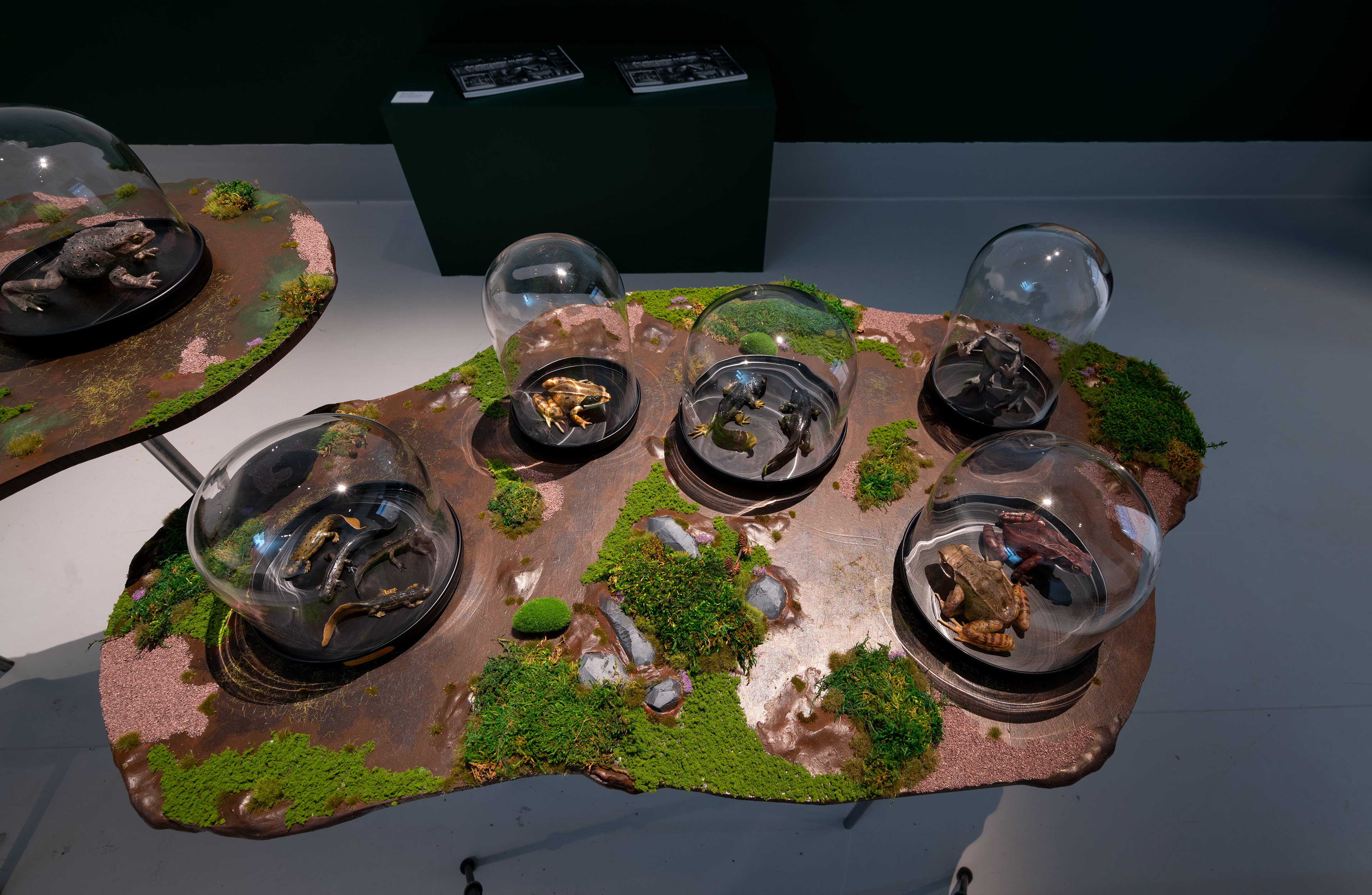
Biotope table closeup
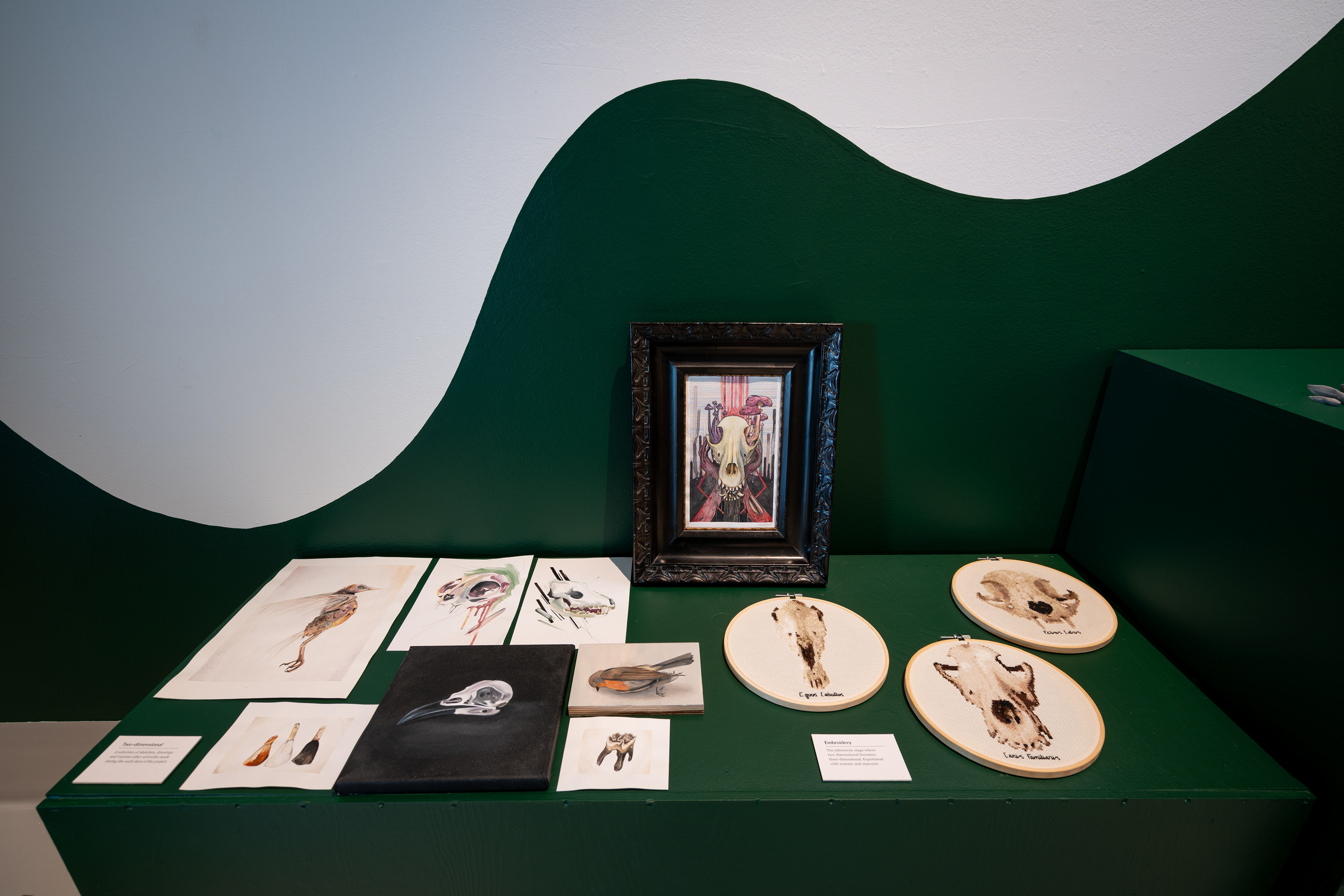
Experimentation, early stages of project
Within capitalist society the value of the hand-made item has been obliterated. Objects are to be conceptualised, produced and consumed in a matter of moments, and this idea of rapid consumption feeds into an existing cycle of death. Because a living animal can not be cast or moulded, only a dead animal will suffice. The handmade object dismantles the death cycle by simply taking its time to observe. Craft becomes activism, an uproar to an established idea of death and consumption, and life is once again valued above time.
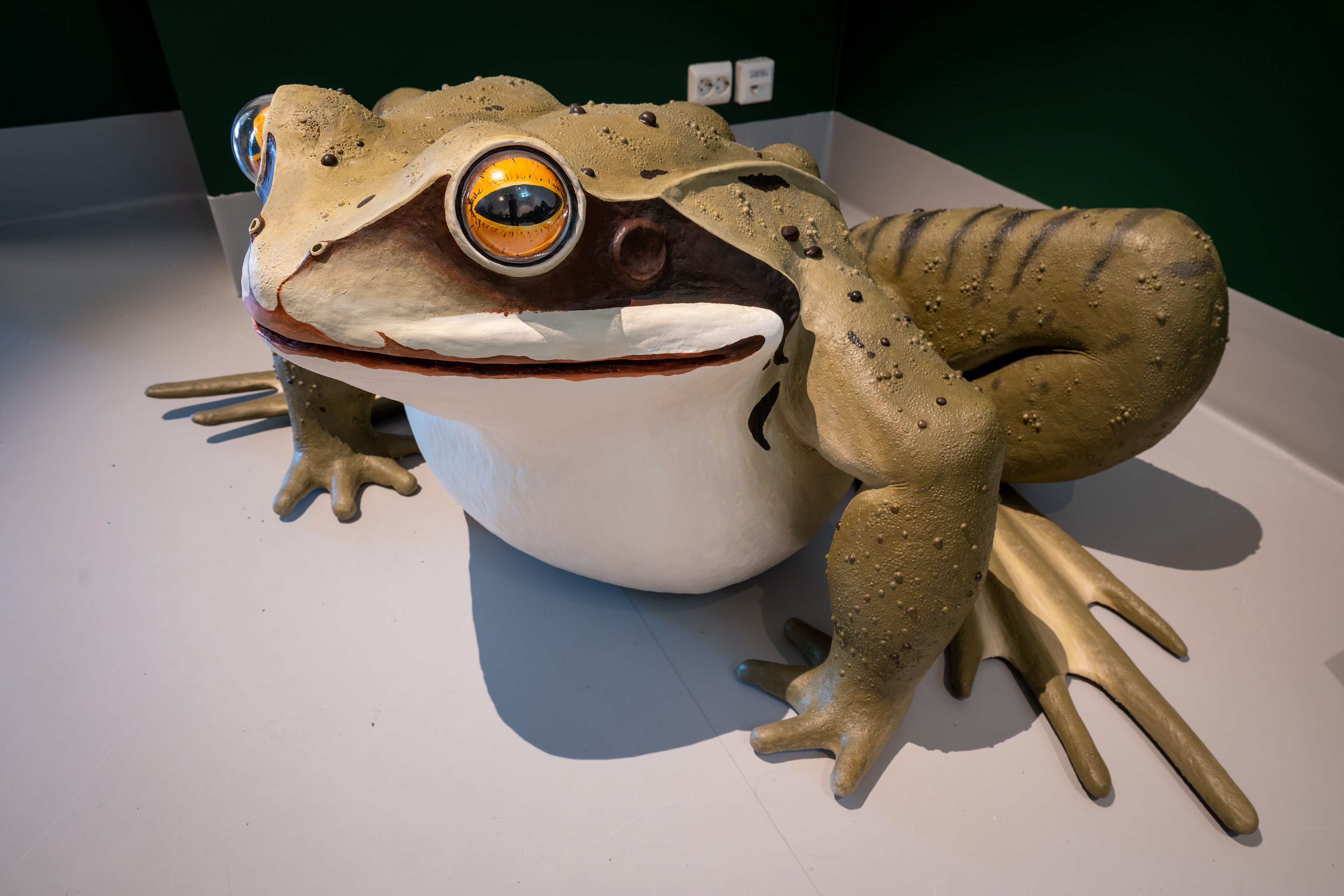
Large scale frog sculpture
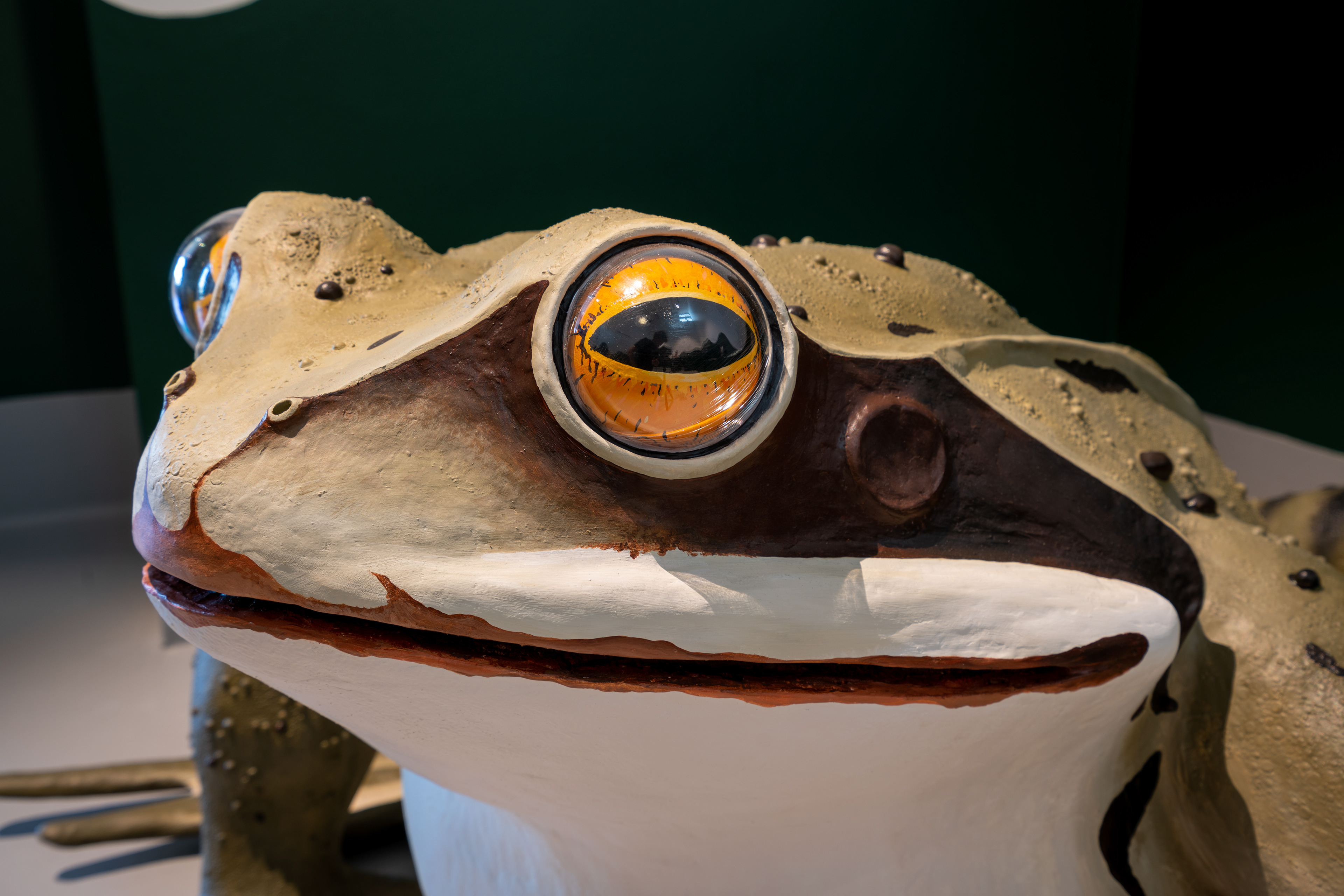
Close-up of eye

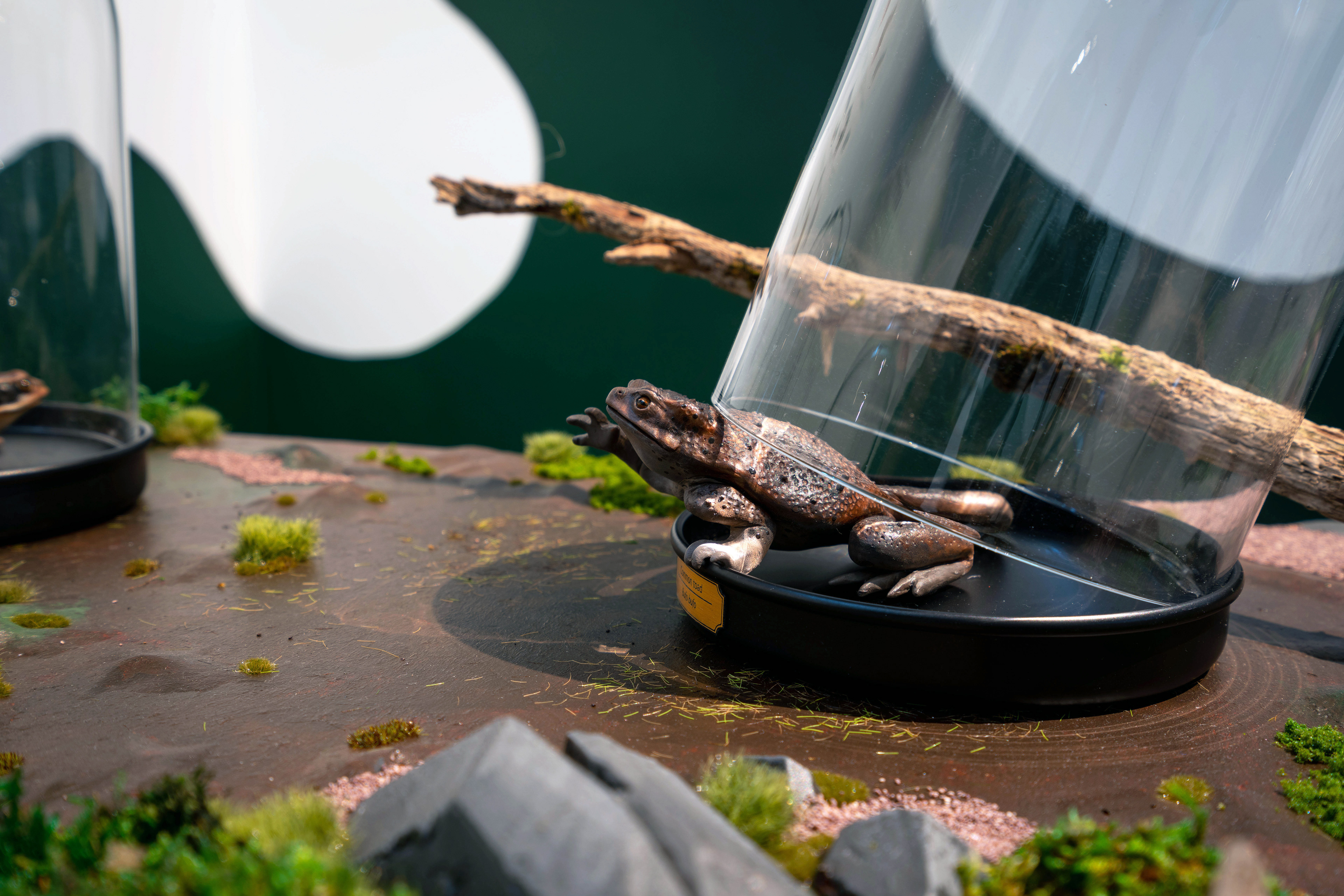
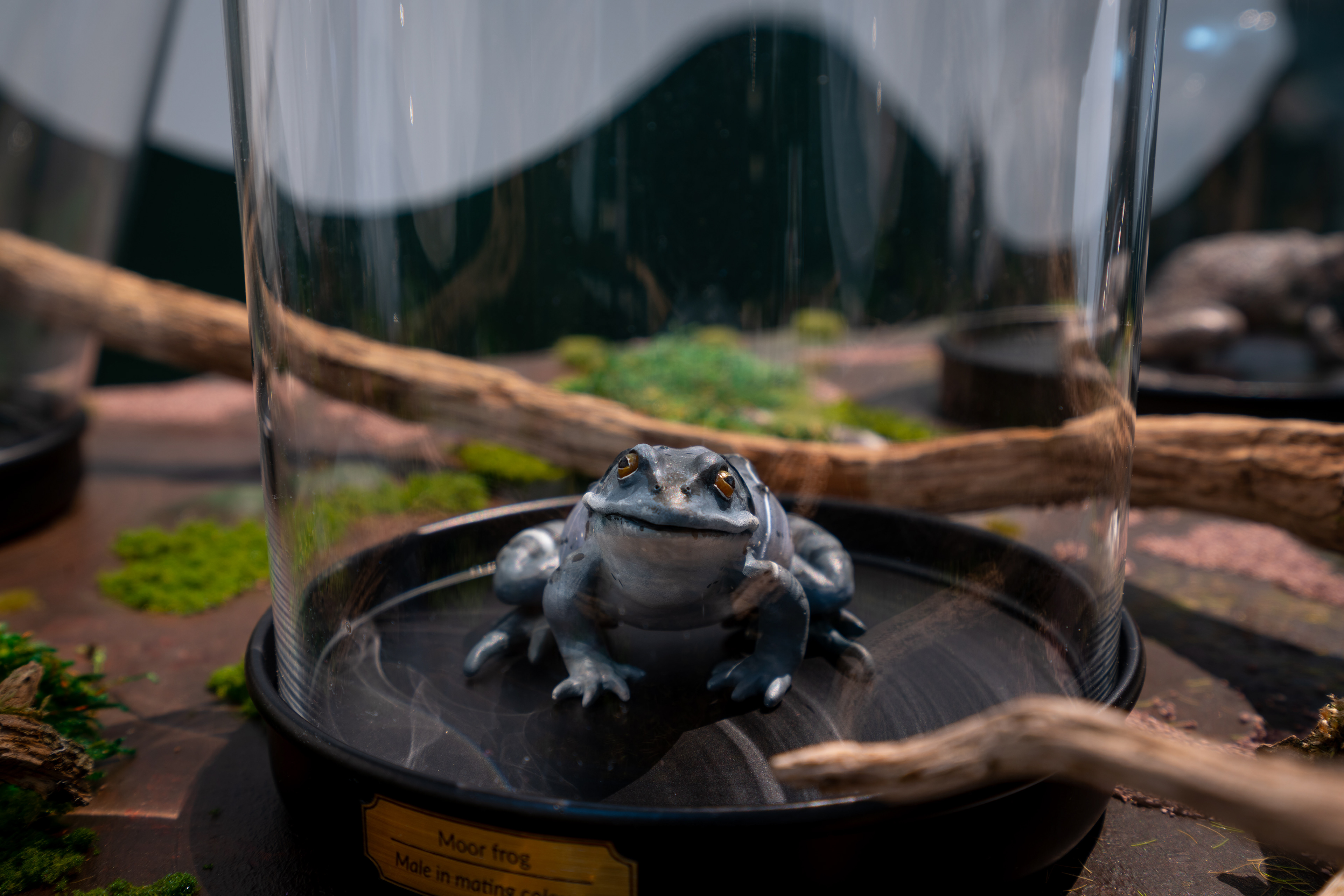
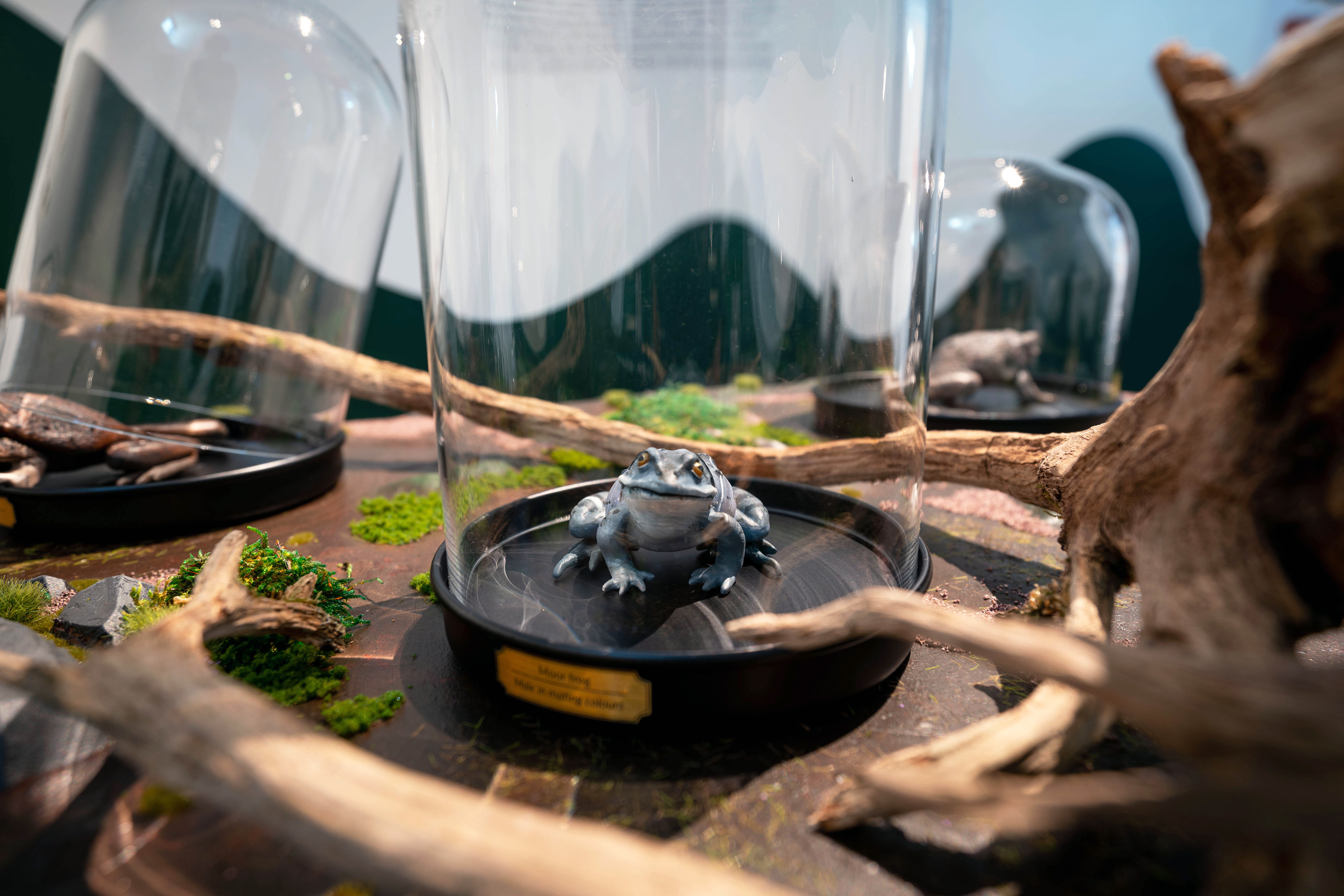

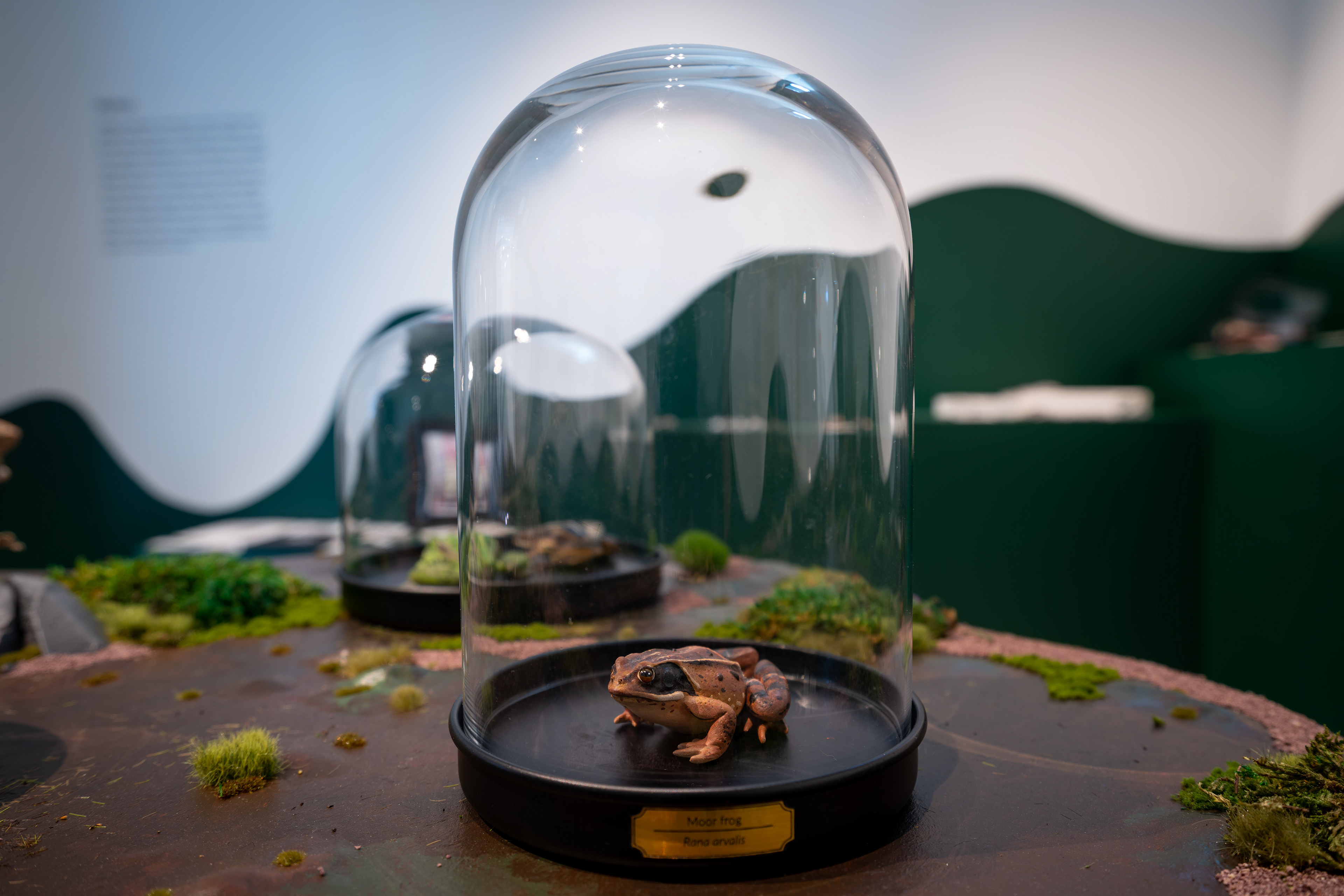
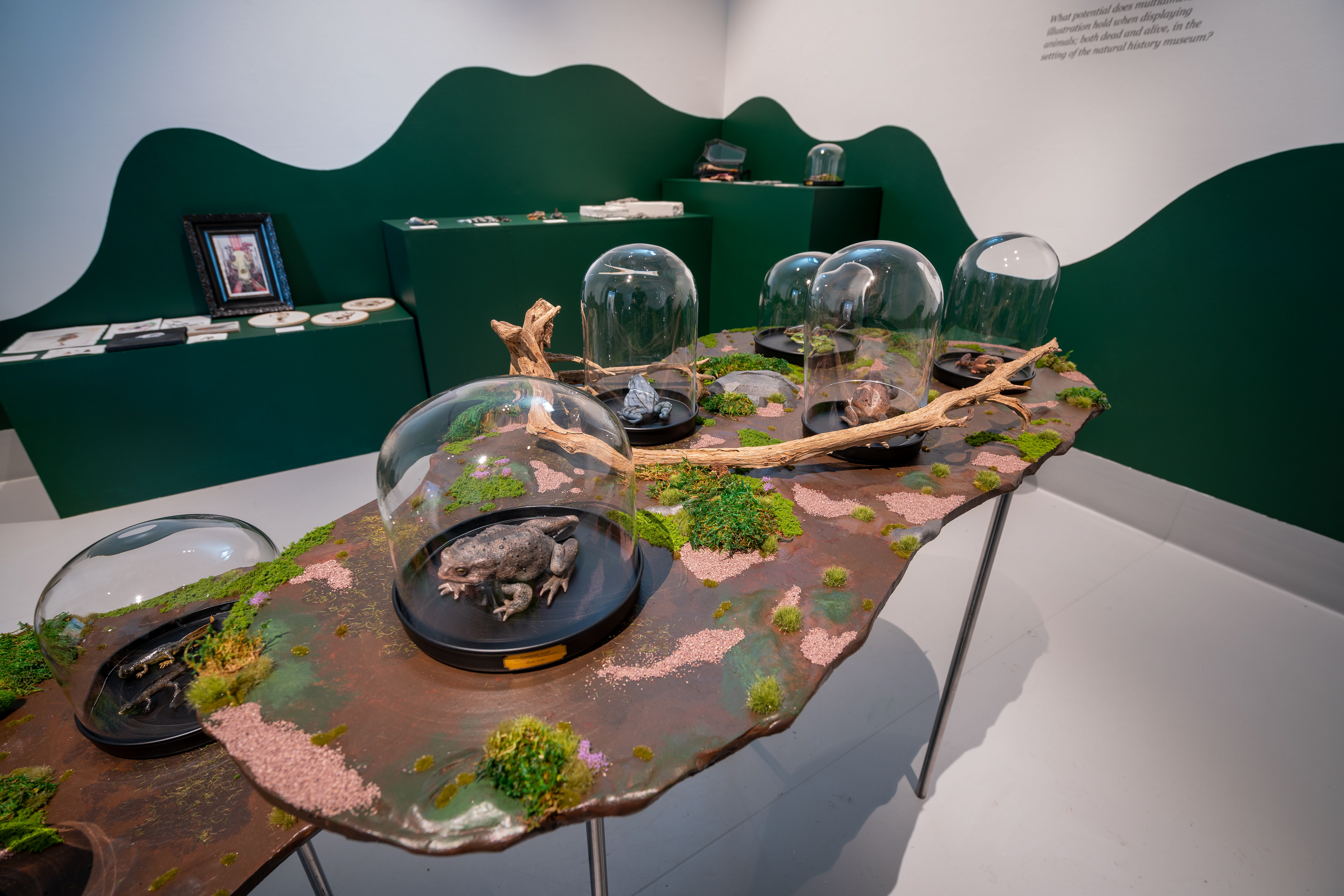
An alternative to death is a project that discusses when death can be justified as an educational tool, and when illustration serves as a better alternative. The project informs, asks questions and engages the audience to think differently about topics that have previously been neglected.
If you wish to view or download the complete thesis in English, please visit the link below.
If you wish to view or download the complete thesis in English, please visit the link below.
